- CruiseMapper
- Ships and Lines

Cruise Ship Cruising Speed
How fast is a cruise ship, which is the fastest cruise ship in the world? Read all about the cruise ship speed (average/top cruising speed) which is generally measured in knots, but also in mph/kph. This page is integrated with our surveys on ship dimensions , ship propulsion/engines, power and our cruise tracker (current positions).
How fast is the fastest cruise ship in the world?
Cunard Line 's Transatlantic liner RMS Queen Mary 2 (QM2) weighs almost 151,500 tons, with a cruising speed of 29 knots (33,5 mph / 54 kph). This unique vessel is the only currently operational Atlantic Ocean liner crossing weekly the huge distance between Southampton (Great Britain's maritime capital) and NYC New York USA (world's financial capital). The below photo shows an engine room telegraph (aka engine order telegraph or Chadburn). This device was used on older ships and submarines for communication between Navigation Bridge and Engine Room, where crew powered the vessel at certain (fixed) speeds.
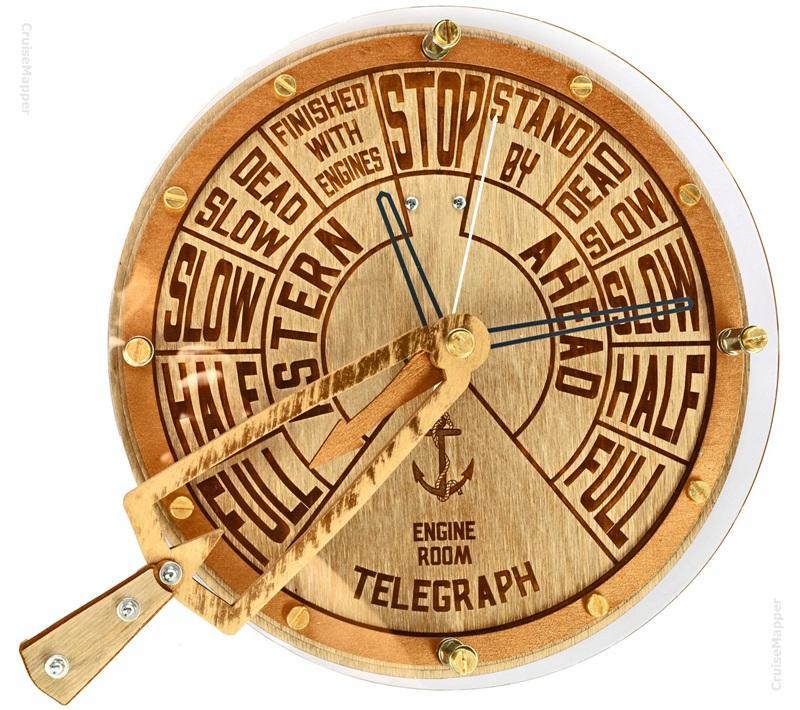
QM2's Transatlantic crossing distance is almost 3,000 nautical miles, or ~3,400 statutes/normal miles (5,500 km), and this is done in less than 7 days. The world's most famous ocean liner (maybe after RMS Titanic ) has an exterior deck space of 14,200 m2 for passengers to enjoy the "fastest sea ride" ever, and, of course, transparent windscreens to shield them at the high speeds.
The world's second-fastest cruise ship is MS Voyager (last named Costa Voyager ), now owned and operated by a Chinese company. Liner's service speed is 28 Kn (32 mph - 51,5 kph). But there's a trick - this vessel weights just 24,400 tons. In comparison, the world's largest cruise ships - Royal Caribbean's Oasis-Class (nearly 225,300 tons each) cruise with an average speed of 20 knots (23 mph / 37 kph) and can go with "top speed" 22,5 Kn (26 mph / 42 kph).
The world's third-fastest cruise ship is P&O Oriana (now Piano Land) . In 1997, it won the "Golden Cockerel" award for being the company's fastest vessel - accomplishing a maximum cruising speed of 26,2 Kn (31 mph / 50 kph).
Cruising Speed
By definition, the term "cruising speed" signifies the speed for any vehicle (could be cars, ships, aircraft) and it's usually about a speed somewhat below the maximum (as specified by the manufacturer) that is comfortable, but also economical.
Generally, modern cruise ships don't have to be fast - it's not necessary at all. Instead, the new cruisers' demand is for big vessels (as tonnage and passenger capacity), stable and safe (related to propulsion and generators), comfortable, regular as departures, excitingly thrilling as to onboard activities and amenities, and also alluringly tempting as itineraries. And the latest trend is cruise ships also must be more and more fuel-efficient.
For bigger ships, the optimum cruising speed is 20-22 Kn (23 mph / 37 kph). Bigger passenger ships have a large draft (the "invisible" part of the vessel, beneath the waterline), which causes huge resistance and hampers "fast and furious at sea" performances. In return for it, drafts of 23-30 ft (7-9 m) allow smooth rides when traveling even with 25-27 mph (over 40 kph). The vessel's close to top speed cruising is generally used when avoiding storms (especially during the Caribbean summers), during tests, and sometimes when assisting other vessels.
The speed of cruise ships is measured in knots (Kn), 1 knot is 1 nautical mile per hour. Cruise help - for the "normal" speed values, multiply knots by 1,15 (mph), or 1,852 (kph). Below, you may compare the average passenger ship speed in the huge fleets of several big cruise ship companies and lines.
The knot is a nautical term, meaning cruising one hour the distance of one nautical mile. And one nautical mile (by the contemporary world standards) equals 1,15 statue (or "land") miles (6,080 "modern" feet) or 1,852 kilometers. So, to convert the speed values of ships (and riverboats, and of whatever floats) simply multiply knots by the above constants. Worldwide, the knot speed measuring is also used in meteorology and air navigation.
Cruise ship speed (knots to mph/kph conversion)
Speed of cruise ships in knots (kn), miles per hour (mph) and kilometres per hour (kph).
The cruise ship top speed is 2-3 knots higher than its service speed, and it's required rarely - in cases of emergencies (to avoid storms or on rescue operations) and during tests. The average speed of cruise ships is about 20-24 knots. But if you really need the details - well, enjoy the data from our table!

Luxury Cruising
The very latest cruise deals from all lines
How Fast Can A Cruise Ship Go? Top Cruise Ship Speeds
- March 23, 2024
- No Comments
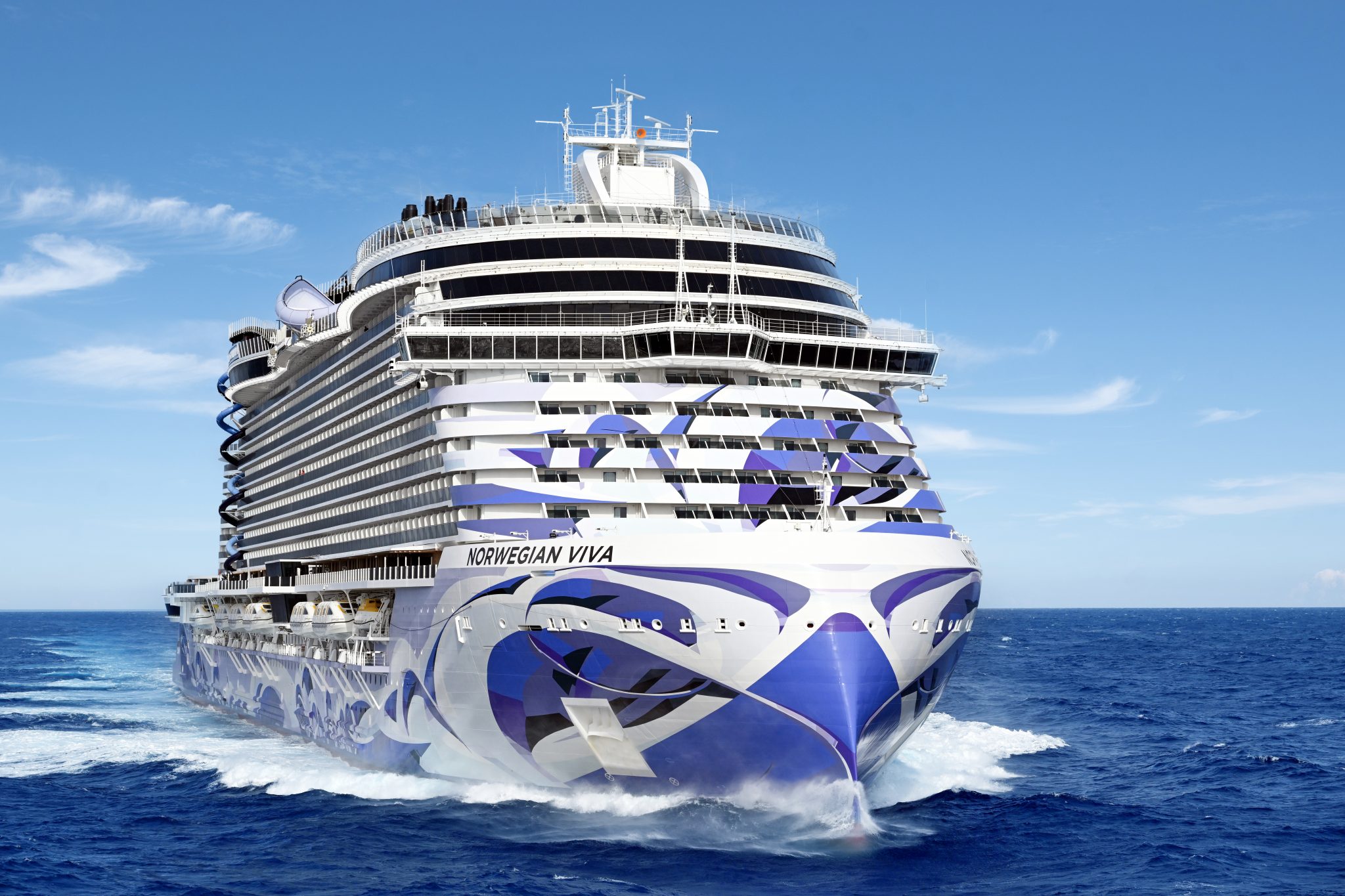
Imagine a skyscraper-sized object cruising through the ocean’s vastness. That’s the reality of today’s modern cruise ships. Despite their colossal proportions, some of the world’s most massive cruise ships achieve mind-boggling velocities. The average cruise ship speed hovers around a swift 20 knots, translating to about 23 mph.
How Fast Can A Cruise Ship Go?
However, this pales compared to the record-breaking SS United States , which reached a staggering cruise ship top speed of 38 knots or, better said, an incredible 44 miles per hour during its 1952 maiden voyage.
Key Takeaways
- The average cruise ship speed is approximately 20 knots, equivalent to 23 mph.
- Top-end cruise liners can reach speeds between 21 to 24 knots under optimal conditions.
- On its inaugural trip , the SS United States holds the historical record with a top speed of 38 knots.
- Various factors, including fuel efficiency and passenger comfort, influence cruising speeds below maximum capabilities.
- Cruise ships demonstrate incredible engineering feats, balancing high-speed potential with operational practicality.
Cruise Ship Speed: What is the Top Speed?
Modern cruise ships , recognized for their vast amenities and focus on passenger experience, commonly cruise at 20 to 23 knots. However, these vessels can push the envelope up to 30 knots in certain circumstances, amounting to nearly 35 mph on the open sea. This upper range is seldom utilized but demonstrates the potential power these ocean liners possess.
Royal Caribbean maintains an advertised average sailing speed of 18 to 20 knots for its illustrious fleet. Like many other cruise operators , their decision is influenced by multiple factors that extend beyond the mere capability of the ship’s engines. Fuel efficiency , passenger comfort , meticulously planned itineraries , and port schedules contribute to this balanced cruising tempo.
With technological advances, the question of cruise ship mph becomes more pronounced compared to historical data, reflecting considerable improvements in marine engineering. However, it’s essential to acknowledge that the prime ocean liner’s speed is not just a representation of machinery and horsepower. It symbolizes the intricate balance of economic viability, maritime strategy, and the quest to deliver an enjoyable and leisurely voyage.
The Fascinating World of Cruise Ship Velocity
The concept of ship velocity on the high seas is more complex than measuring speed. It intertwines history, nautical science, and maritime craft. Grasping the underlying principles of marine travel , including the importance of using cruise ship knots instead of land miles.
Understanding Nautical Miles
Distance at sea is distinctly different from that on land. A nautical mile, the cornerstone of maritime navigation, spans 1.852 kilometers or about 1.15078 miles. This unit of measurement is derived from a minute of latitude, ensuring a link between the earth’s geometry and sea travel . This small yet significant difference amplifies when calculating long distances over sea voyages, making the nautical mile an irreplaceable metric in maritime travel.
The Significance of Knots in cruise ship travel
The term ‘knot’ has been synonymous with seafaring speed for centuries, originating from the archaic method of using a knotted rope to measure velocity. This timeless tradition has carried over to modern-day navigation, where cruise ship knots remain the universal gauge of speed. The knot is embedded in history and represents a practical unit, aligning with the nautical mile and specific to the unique conditions of marine travel.
Understanding these measurements is fundamental in appreciating the design and performance of modern seafaring vessels, from majestic cruise ships that gently glide across the ocean’s expanse to swift sailboats dancing with the wind. Each relies on an ancient yet unyielding system that continues to guide their journey across the vast blue.
What is the Top Speed of a Cruise Ship
When we talk about the allure of the high seas and the vessels that conquer them, the conversation often turns toward speed. The thrill of racing across the ocean’s surface, powered by precision engineering and prodigious horsepower, is a narrative dominated by legendary names and modern advancements. Understanding the peak performance capabilities of these marine titans offers insights into naval architecture and an appreciation for maritime travel’s sheer possibility.
Record Holders and Their Achievements
The illustrious SS United States holds the historical benchmark for the fastest cruise ship speed. She boasted an unrivaled top speed in her heyday—a staggering 38 knots. This feat was underpinned by her groundbreaking design and a propulsion system that few could match, featuring four colossal 18-foot propellers. Though she last sailed the seas many decades ago, her legacy inspires and sets a high bar in cruise ship engineering excellence.
Modern Marvels: Current Cruise Ships and Their Capabilities
The Queen Mary 2 is a modern successor to the historic liners, with an impressive cruise ship top speed of its own. She glides through the water at a swift 30 knots. Although categorized as an ocean liner designed primarily for transatlantic voyages , she embodies the fusion of luxury and performance that defines contemporary cruising. Today’s cruise ships, helmed by industry titans like Carnival and Royal Caribbean, can exceed 25 knots. Nevertheless, such speeds are seldom utilized in regular service, with operational constraints and efficiency taking precedence over maximum velocity.
In summary, while the SS United States and the Queen Mary 2 stand as emblematic beacons of the fastest cruise ship speed , they also represent the evolution of a segment where the pinnacle of speed, luxury, and technological mastery coalesce. Their storied voyages continue to capture the imagination of those who yearn for the romance of the seas and the thrill of unmatched velocity.
How the Queen Mary 2 Sets the Standard for Speed
The Queen Mary 2 is more than an ocean liner; it is a testament to the advancement of maritime engineering. As the flagship of the Cunard Line , this vessel boasts a cruise liner top speed seldom matched by others in its class. The Queen Mary 2 often dominates the conversation when discussing ocean liner speed, marking a pinnacle in ocean travel with its ability to sustain a maximum speed of 30 knots.
The above comparison’s figures reflect Queen Mary 2’s exceptional capabilities, and Queen Mary 2 often dominates the conversation when discussing ocean liner speeds, such as the SS United States. Yet, what sets the Queen Mary 2 apart is its consistent performance and reliability on transatlantic routes, a hallmark of Cunard’s prestigious heritage.
Why Cruise Ships Don’t Use Their Full Speed Potential

In the vast and luxurious world of cruising , a vessel’s velocity is a finely tuned dance between fuel efficiency, passenger comfort, and meticulous scheduling. While technological advancements have given cruise ships the power to race across the oceans, economic realities and pursuing an unrivaled guest experience often dictate a more measured pace.
Fuel Efficiency and Economics
Fuel costs constitute a significant portion of a cruise ship’s operational expenses. Fuel efficiency plays a pivotal role, so it’s financially prudent for ships to navigate at speeds that conserve fuel. This avoids the exponential increase in fuel consumption that comes with pushing a vessel’s engines to their limits. This economical and environmentally conscious balance reduces the cruise industry’s carbon footprint.
Passenger Comfort and Safety
Beyond the economics, cruising is about the comfort and safety of its passengers. A gentle journey across the sea ensures tranquil waters and a stable environment, free from the discomfort of turbulent waters that higher speeds might induce. Cruise lines prioritize a serene onboard experience, extending from the gentle swaying of the ship to the seamless delivery of amenities and activities.
Scheduling and Port Arrivals
Timing is everything when it comes to successful cruise ship itineraries. Adhering to a schedule harmonizing with planned activities, excursions, and docking times is essential. To avoid the complications and expenses associated with off-schedule port arrivals, such as increased docking fees or logistical conflicts, ships use their speed strategically to ensure timely but cost-effective operations.
Weather Conditions
Weather conditions can significantly affect a cruise ship’s speed. Some contemporary cruise ships have a top speed of 30 knots, while others may travel at a slower speed of around 10. Weather conditions such as rough seas, heavy rain, and strong winds will impact the ship’s speed and can significantly slow a cruise ship down.
Cruising Speed
Cruising speed refers to the speed at which a ship is sailing when it is not at its fastest speed. This cruising speed allows the ship to navigate various weather and ocean conditions and reduce its carbon footprint on sea days. Some cruise ships are being redesigned to travel slower to reduce their carbon footprint and make their voyages more environmentally friendly.
The Impact of a Cruise Ship’s Design on Its Speed
When it comes to the performance of a maritime behemoth, cruise ship design is a critical factor influencing various aspects like speed, fuel efficiency, and guest comfort. A cruise ship’s engineering encapsulates visual aesthetics and integrates advanced ship propulsion technologies, directly influencing sea navigation. Operating at optimal speed is a balancing act that accounts for economic considerations, safety, and the overall travel experience highlighted by luxurious cruise ship amenities .
Final Thoughts

While capable of reaching impressive speeds, modern cruise ships often prioritize itineraries that favor fuel economy, onboard serenity, and well-timed port arrivals over the thrill of hitting their maximum cruise ship mph . This pragmatic approach does not detract from a cruise ship’s marvel; instead, it showcases an evolution of priorities within the industry. Cruise liners today promise a seamless blend of leisurely pace and punctuality, ensuring each voyage is enjoyable and respects the intricate scheduling that modern sea travel demands.
Cruise Ship Top Speed – FAQ
Source link
Most Popular
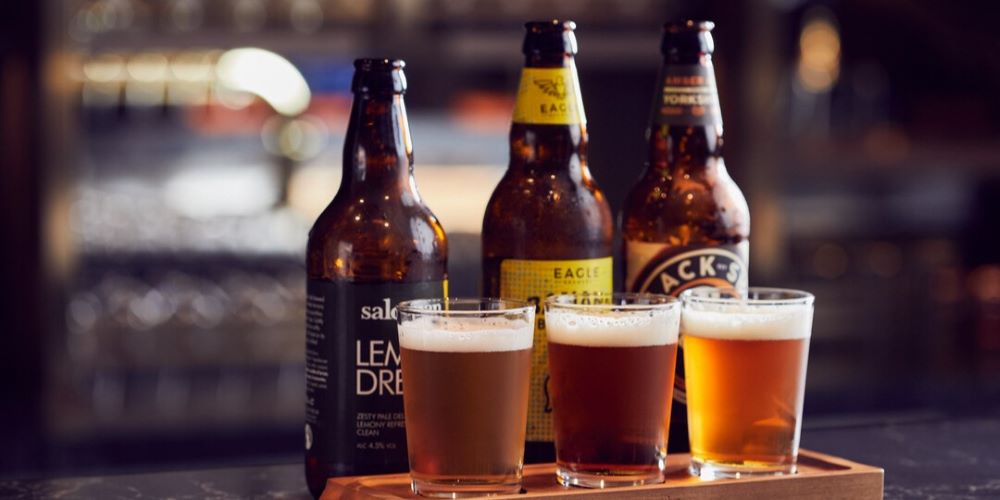
Major Changes To Popular Cruise Line’s Drinks Policies Likely To Anger Loyal Guests
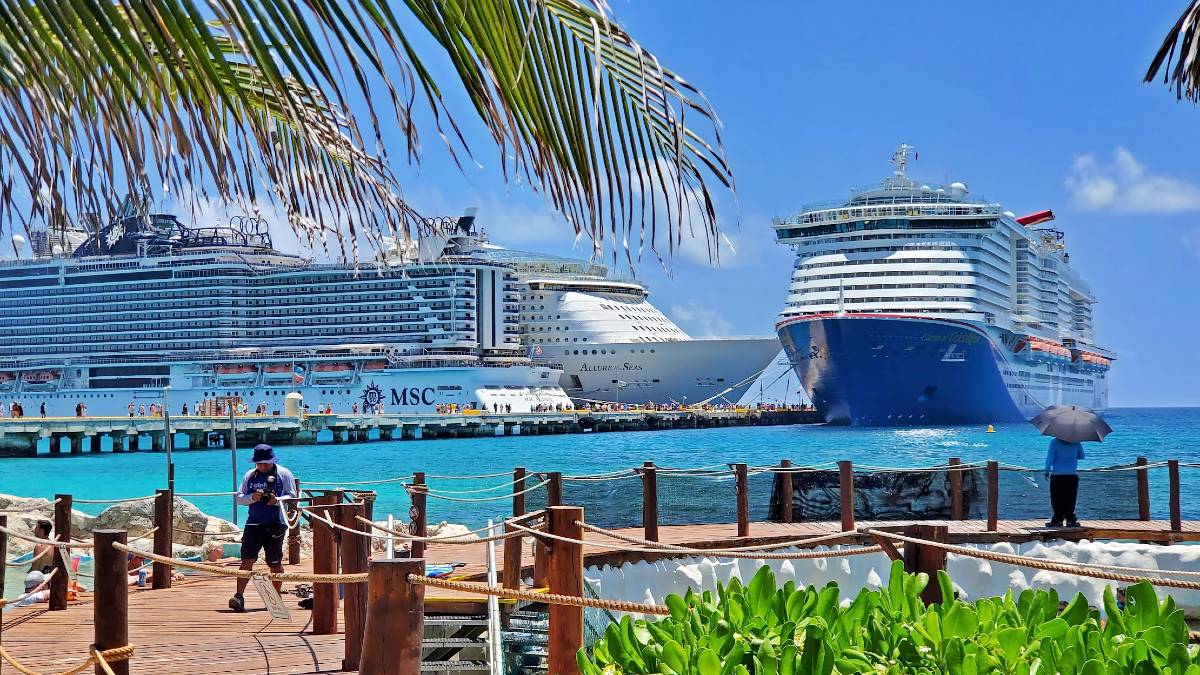
Cruise Passenger in Costa Maya Warns After Port Authority Demands Ship Card

Carnival Defends Service for the Blind After Refund Request for Upcoming Cruise
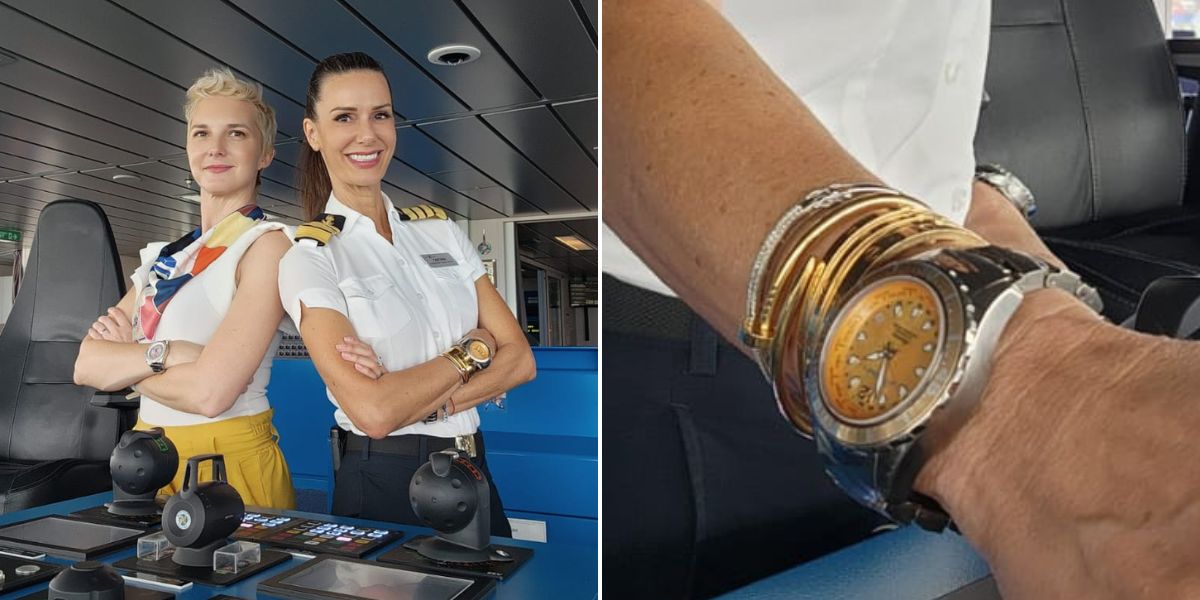
Captain Kate McCue Partners With Female-Owned Watch Brand
The Magazine is the while the lovely valley teems with vapour around me, and the meridian sun strikes the upper surface of the impenetrable foliage of my trees.
RECENT POSTS
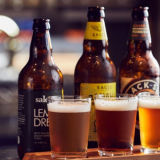
Major Changes To Popular Cruise LineR...
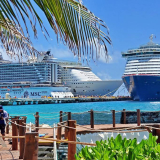
Cruise Passenger in Costa Maya Warns Aft...
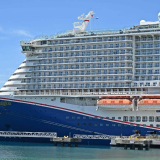
Carnival Defends Service for the Blind A...
Popular posts.
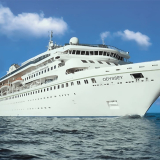
Three Year Cruise Moves Closer to Realit...
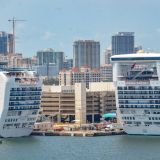
Two of Carnival’s Cruise Lines Rel...
- Baby & toddler
- Celebrity Cruises
- Choosing a cruise
- Costa Cruises
- Cruise Lines
- Cruise News
- Cruise Special Offers
- Cruise Tips
- Destinations
- Disney Cruises
- First time cruisers
- Food and drink
- Holland America Line
- Hurtigruten
- Money saving tips
- MSC Cruises
- Norwegian Cruise Line
- Oceania Cruises
- P&O Cruises
- Princess Cruises
- River Cruising
- Royal Caribbean
- Uncategorised
- Uncategorized
- Virgin Voyages
- Windstar Cruises

Cruise Ship Speeds or How Fast Do Cruise Ships Go? 7 Popular Cruise Ships Compared
Cruise ship speed typically has an average cruising speed between 20 and 25 knots (23-29 mph or 37-46 km/h) . Some of the fastest cruise ships, like the Queen Mary 2, can reach speeds of up to 30 knots (34.5 mph or 55.5 km/h) . It’s important to note that these speeds are not constant, as they can fluctuate depending on the factors mentioned above.
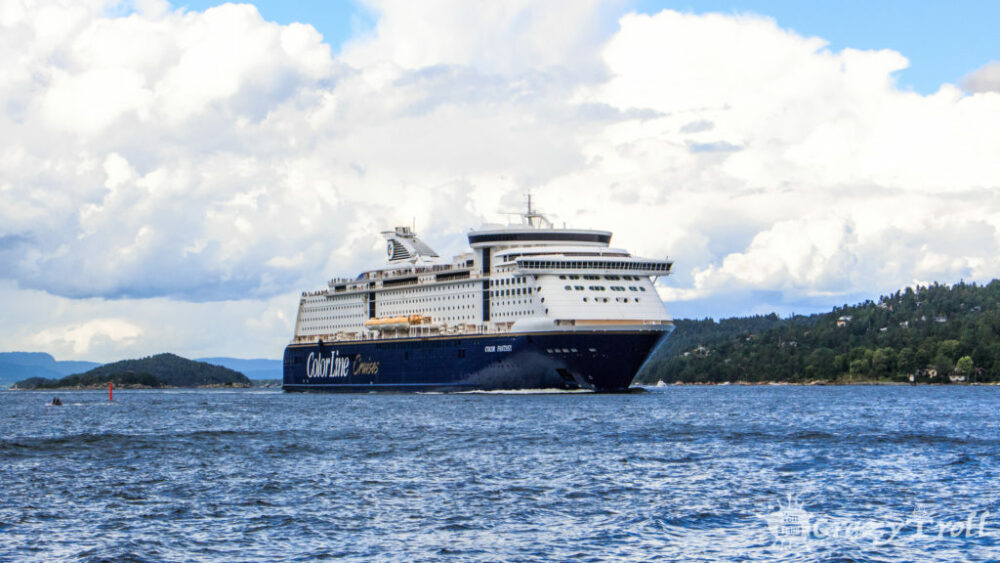
Average Speeds of Popular Cruise Ship Models
Other modern and notable cruise ships with impressive speeds include:
- Harmony of the Seas – This Royal Caribbean ship is one of the largest cruise ships in the world and can reach speeds of up to 22 knots (25 mph or 41 km/h) . As a flagship of the company, it is known for its innovative design, diverse entertainment options, and environmental initiatives.
- Norwegian Bliss – Belonging to the Norwegian Cruise Line, the Norwegian Bliss can achieve a top speed of 23.2 knots (26.7 mph or 43 km/h ). It is a flagship vessel offering a wide range of amenities, including the largest race track at sea and a stunning observation lounge.
- MSC Meraviglia – MSC Cruises’ MSC Meraviglia can travel at speeds of up to 22.7 knots (26.1 mph or 42 km/h) . This ship is known for its cutting-edge technology, environmentally friendly features, and impressive entertainment options, including the world’s first Cirque du Soleil at sea.
- Carnival Vista – The Carnival Vista from Carnival Cruise Line can reach speeds of up to 23 knots (26.5 mph or 42.6 km/h) . As the flagship of the fleet, it boasts unique features like an IMAX theater, a SkyRide attraction, and an extensive water park.
- Celebrity Edge – This innovative ship from Celebrity Cruises can reach a top speed of 22 knots (25.3 mph or 40.7 km/h) . The Celebrity Edge is known for its revolutionary design, transformative spaces, and luxurious accommodations, setting a new standard in the industry.
- Disney Dream – Part of the Disney Cruise Line fleet, the Disney Dream can achieve speeds of up to 23.5 knots (27 mph or 43.5 km/h) . The ship is designed to provide a magical experience for families, with themed areas, Broadway-style shows, and unique Disney touches throughout.
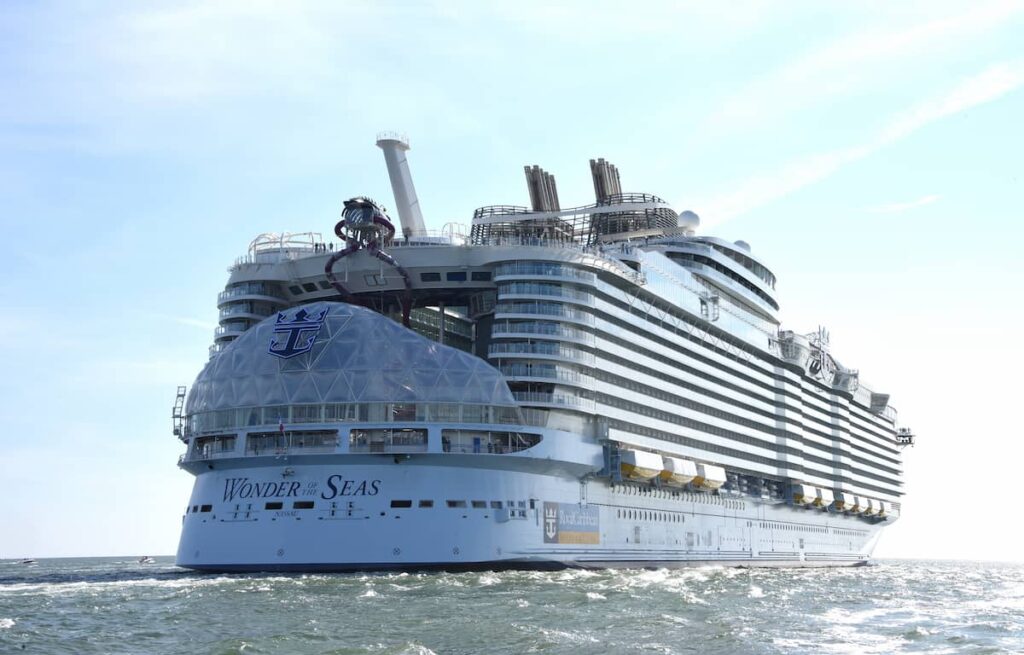
These modern cruise ships showcase the advancements in technology, design, and efficiency that have shaped the industry in recent years. Each flagship vessel represents its respective company’s commitment to innovation, sustainability, and exceptional guest experiences. The speed of cruise ships is much higher compared to cargo ships in most cases travel at speeds from 12 to 16 knots , however, container ships stand out in comparison to cargo ship speeds and can have speeds up to 20 – 25 knots.
When comparing modern cruise ships to historic vessels, it’s interesting to see how far the industry has come. For instance, a comparison of the Titanic and modern cruise ships reveals significant advancements in size , design, safety, and speed over the past century.
To better understand the speeds of various cruise ship models, it’s helpful to know the meaning behind their prefixes. Our guide to ship prefix meanings provides an overview of the prefixes used for different types of vessels.
As you plan your next cruise, it’s essential to consider the ship’s speed and how it may affect your itinerary. For example, if you’re visiting Mexico’s top cruise ports , a faster ship may allow you to spend more time exploring each destination.
Finally, if you’re concerned about motion sickness, it’s crucial to choose a cabin that minimizes the ship’s movement. Our guide to the best rooms on a cruise ship for motion sickness can help you make the right decision for a comfortable journey.
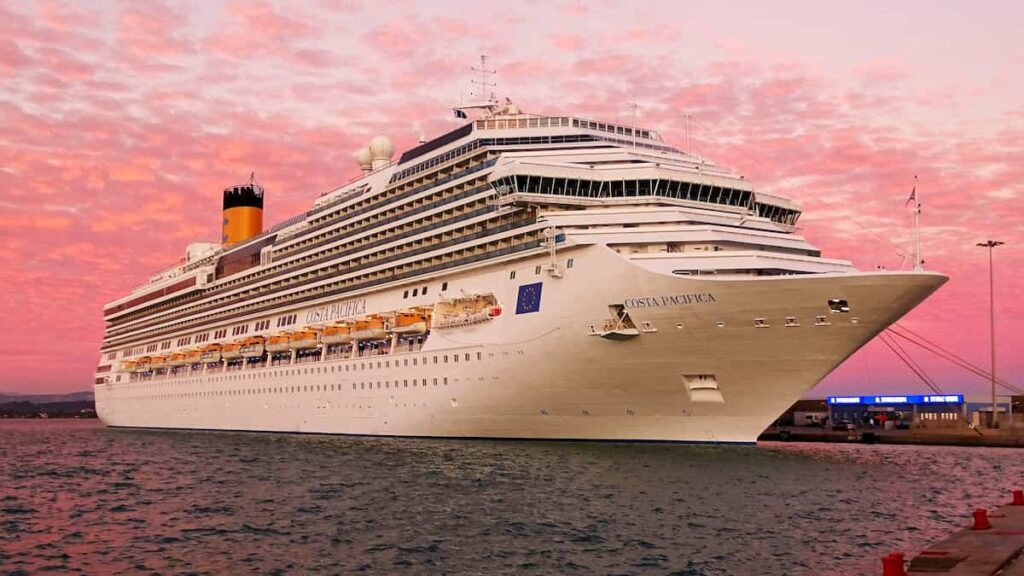
Factors Affecting Cruise Ship Speed
Cruise ship speeds depend on a variety of factors, including the ship’s size, design, propulsion system, and weather conditions. Generally, larger ships are slower due to their increased mass and greater resistance in the water. Weather conditions like strong winds and currents can also have a significant impact on a ship’s speed.
Ship design also plays a critical role in determining a cruise ship’s speed. Modern ships are engineered to optimize hydrodynamic efficiency, reducing drag and increasing overall speed. A ship’s propulsion system, which can vary between traditional diesel-electric engines and gas turbines, can also influence its speed. You can learn more about how these propulsion systems work in our article about cruise ship stability .
Additionally, it’s essential to understand the terminology used when discussing a ship’s speed. Cruise ships’ speeds are often measured in knots. To learn more about what a knot is and how it relates to speed, check out our article explaining how fast a knot is .
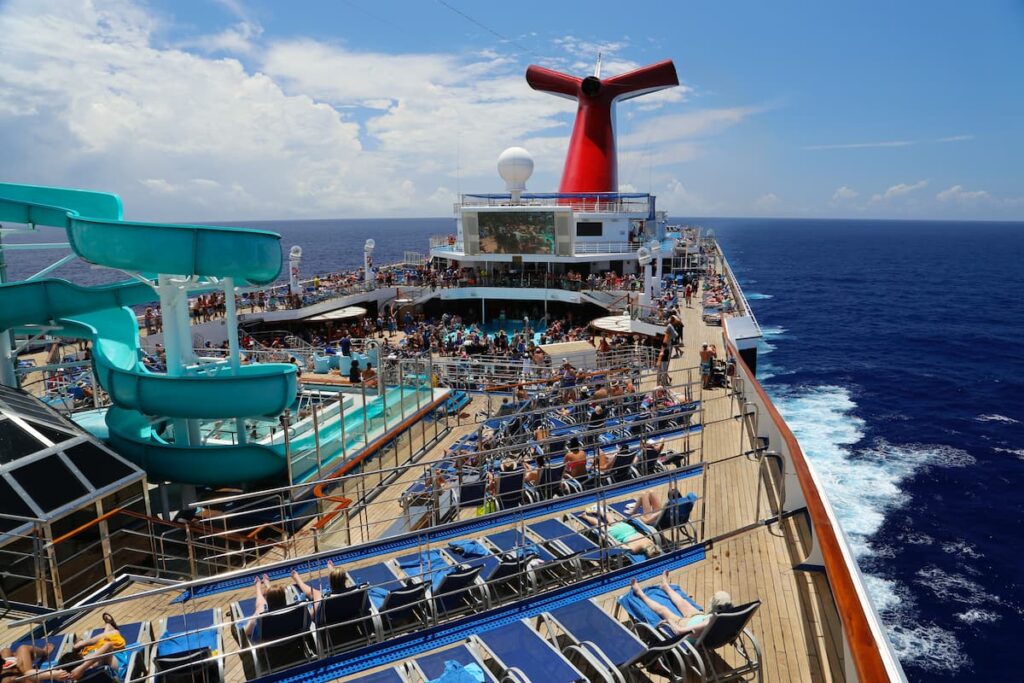
The Importance of Speed in Cruise Ship Travel
The importance of speed in cruise ship travel cannot be understated. It directly impacts fuel efficiency, passenger comfort, and itinerary planning, all of which contribute to a memorable and enjoyable vacation experience for cruise ship passengers.
Fuel Efficiency
Cruise ships need to strike a balance between speed and fuel efficiency. The faster a ship travels, the more fuel it consumes, which can significantly increase operational costs. Cruise lines aim to find the optimal speed that allows them to cover the desired distance in a reasonable amount of time without excessively consuming fuel. Our article on fuel consumption provides a deeper understanding of how fuel usage impacts the maritime industry.
Passenger Comfort
While speed is essential, passenger comfort is also a priority for cruise lines. Ships are designed to minimize the effects of motion sickness by employing advanced stabilization techniques. Furthermore, maintaining a steady and comfortable speed ensures a smoother and more enjoyable voyage for passengers. In comparing the Titanic and modern cruise ships , it’s evident that there have been significant improvements in passenger comfort and safety over the years.
Itinerary Planning
Cruise ship speed plays a crucial role in itinerary planning. Faster ships can cover more distances in a shorter time, allowing them to visit more destinations within a set time frame. However, speed must be balanced with other factors, such as time spent in port, to create an attractive and feasible itinerary for passengers. For example, a faster ship could enable passengers to spend more time exploring the best Mayan ruins in Costa Maya, Mexico , providing an unforgettable experience.
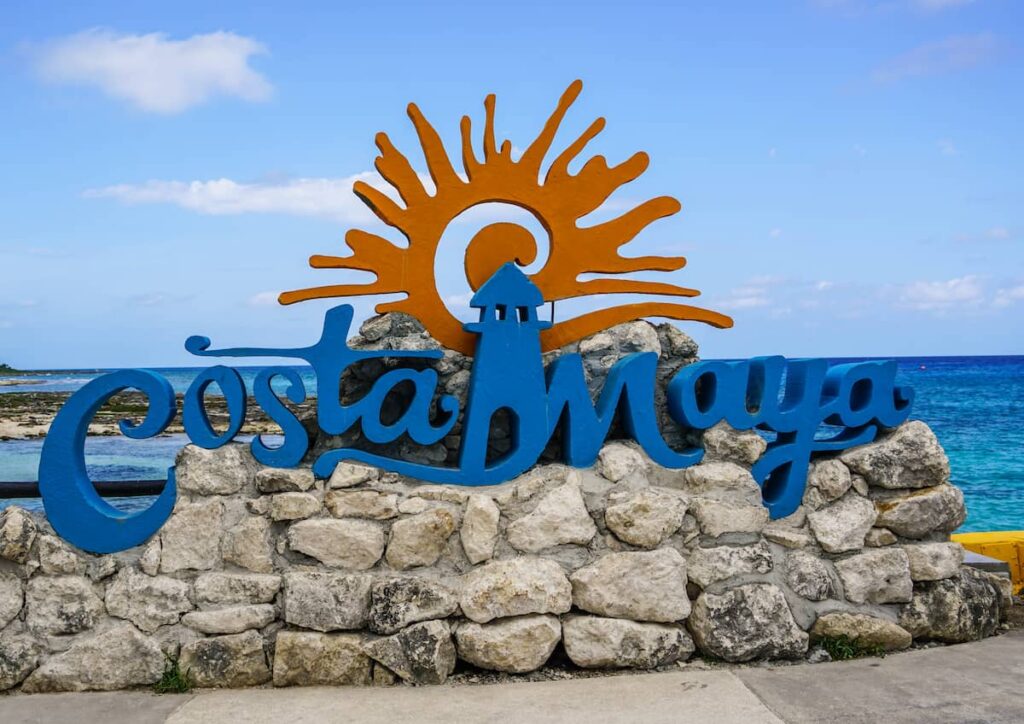
Cruise ship speed is not only essential for large vessels but also for smaller charter boats , such as yachts and sailboats. When planning a vacation, it’s essential to understand the speed capabilities of different types of vessels. Our guide to yacht and sailboat charters in Miami provides insight into the various options available to travelers seeking a more personalized and intimate boating experience.
How Cruise Ships Maintain Their Speeds
Propulsion systems.
Cruise ships use various propulsion systems, such as diesel-electric engines or gas turbines, to generate power and maintain their speed. These systems are designed to be efficient and reliable, ensuring that the ship can maintain a consistent speed throughout its journey. Our article on cruise ship stability provides an in-depth look at the relationship between propulsion systems and a ship’s overall stability.
Stabilization Techniques
To maintain a smooth and comfortable ride, cruise ships employ advanced stabilization techniques. Modern cruise ships use stabilizers , such as fins and gyroscopic stabilizer systems , to counteract the effects of waves and minimize the ship’s rolling motion. These technologies help ensure a steady speed and a more enjoyable experience for passengers.
Advanced Navigation Systems
Cruise ships are equipped with sophisticated navigation systems that allow them to determine the most efficient routes and maintain their speed in varying weather conditions. These systems use GPS, radar, and weather data to help the crew make informed decisions about the ship’s course and speed.
Speed vs. Sustainability
Environmental impact of cruise ships.
While speed is an essential aspect of cruise ship travel, it’s important to consider the environmental impact of these vessels. The faster a ship goes, the more fuel it burns, contributing to air pollution and greenhouse gas emissions. Additionally, high-speed travel can also cause noise pollution and disturbance to marine life.
Innovations for a Greener Future
As the cruise industry continues to grow, there is an increasing focus on sustainability and reducing the environmental impact of these ships. Some innovations include the development of hybrid and electric propulsion systems, the use of cleaner fuels, and advances in the hull design to reduce drag and improve fuel efficiency. These efforts aim to balance the need for speed with the industry’s responsibility to protect the environment, ensuring a more sustainable future for cruise ship travel.
Cruise ship speeds vary based on factors such as size, design, and weather conditions, with average speeds, typically ranging between 20 and 25 knots. While speed is crucial for itinerary planning and passenger comfort, cruise lines must balance this with fuel efficiency and sustainability concerns. As the industry evolves, we can expect to see continued innovation to minimize the environmental impact of cruise ships while still providing a comfortable and efficient mode of travel.

What is the fastest cruise ship?
The Queen Mary 2 is one of the fastest cruise ships, capable of reaching speeds up to 30 knots (34.5 mph or 55.5 km/h).
How do cruise ships maintain their speed?
Cruise ships maintain their speed using propulsion systems, advanced stabilization techniques, and sophisticated navigation systems that help them determine the most efficient routes.
Do cruise ships travel faster at night?
Cruise ships generally maintain a consistent speed throughout the day and night. However, speeds may be adjusted based on weather conditions or other factors.
What is the environmental impact of cruise ship speeds?
Faster cruise ships consume more fuel, leading to increased air pollution and greenhouse gas emissions. High-speed travel can also cause noise pollution and disturbance to marine life.
What innovations are being developed to improve cruise ship sustainability?
Some innovations include hybrid and electric propulsion systems, cleaner fuels, and advances in hull design to reduce drag and improve fuel efficiency.
About the author
I worked as an officer in the deck department on various types of vessels, including oil and chemical tankers, LPG carriers, and even reefer and TSHD in the early years. Currently employed as Marine Surveyor carrying cargo, draft, bunker, and warranty survey.
Leave a Reply Cancel reply
Your email address will not be published. Required fields are marked *
Save my name, email, and website in this browser for the next time I comment.
Latest posts
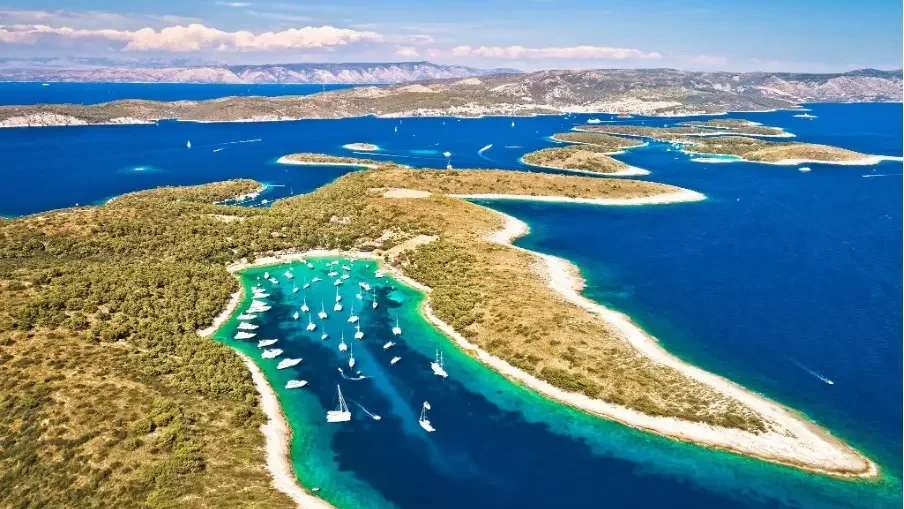
Sustainable and Luxurious: Discovering Split’s Yachting Paradise
Split, the Adriatic jewel, offers a yachting paradise where history meets pristine maritime beauty. Here, to rent a yacht means unlocking the gateway to exploring secluded bays, experiencing cultural heritage […]
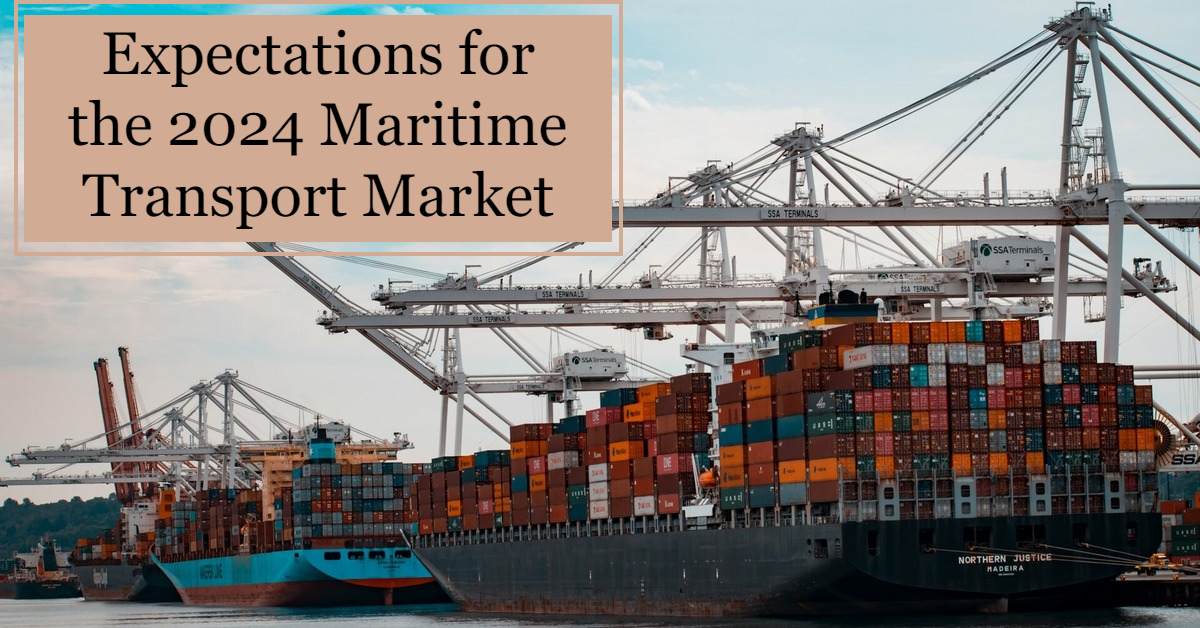
Expectations for the 2024 Maritime Transport Market
What does the 2024 maritime transport market look like? International events have disrupted supply chains and changing regulations keep industry leaders on their toes.
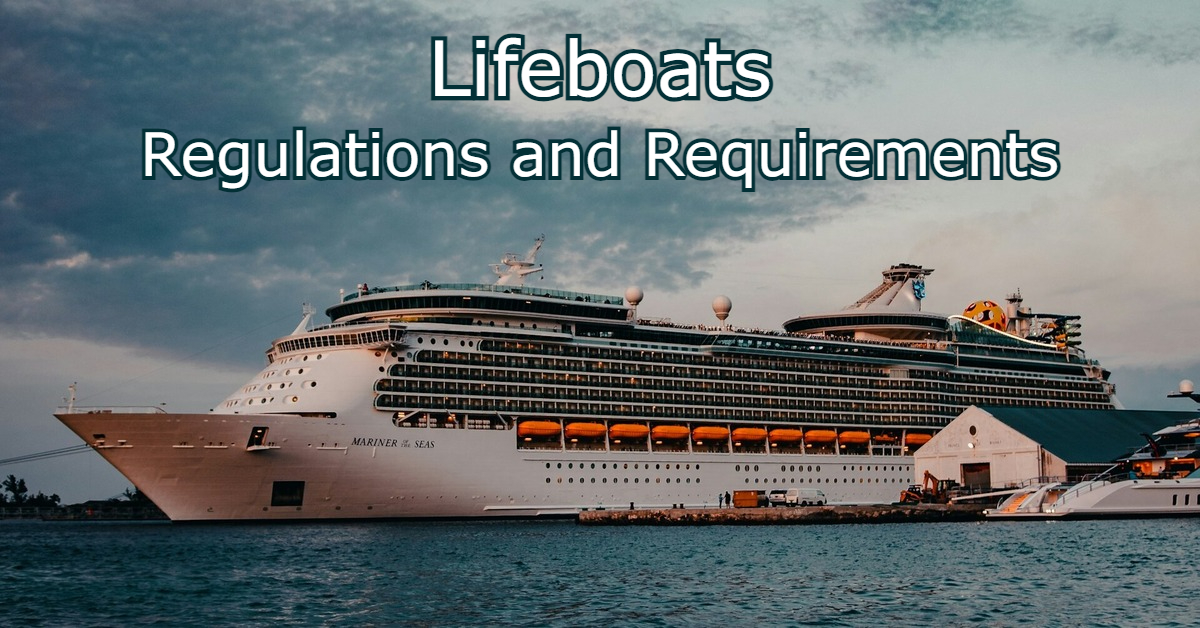
Lifeboats: Regulations and Requirements
In an emergency, portable vessels called lifeboats will get a ship’s occupants to relative safety. So how do lifeboats work?
Cruise Tips For Families & Single Cruisers
Things to Know Before You Cruise
How Fast Do Cruise Ships Really Go? Cruise Ship Speeds Revealed!
As a cruise enthusiast, I’ve always been curious about the speed of these massive vessels and how they can cover such vast distances in a day. So, I decided to delve deeper into the facts and figures surrounding the speed of cruise ships and the factors that can influence their velocity.
In this article titled ‘How Fast Do Cruise Ships Really Go? Cruise Ship Speeds Revealed!’, I’ll be sharing my findings on the cruising industry’s speed basics, the fastest ships, and the factors that can affect a ship’s velocity.
Cruise ships have always been a popular mode of travel for millions of people worldwide, offering endless entertainment, luxurious amenities, and exotic destinations. However, the speed of these vessels is a crucial aspect that often goes unnoticed.
Did you know that the average cruising speed of a cruise ship is between 18 to 22 knots, covering around 480 nautical miles in a day? That’s impressive, but what’s even more fascinating is that the maximum top speed of some of these massive ships can reach up to 25 knots, with Cunard’s Queen Mary 2 being the fastest at 30 knots.
In this article, we’ll be revealing the secrets behind the speed of cruise ships and what factors can influence their velocity. So, let’s get started!
- The average cruising speed of a cruise ship is between 18 to 22 knots (20 to 25 mph), while the maximum top speed is around 25 knots.
- The fastest cruise ship is Cunard’s Queen Mary 2, which can reach speeds of up to 30 knots.
- Cruise ships rarely reach their maximum speeds, and their speed can be influenced by various factors such as itinerary, fuel, distance to shore, hazards, and weather.
- In 24 hours, a cruise ship can cover about 480 nautical miles, and newer cruise ships have advanced technology to reduce friction and increase speed.
Cruise Ship Speed Basics
As someone who’s been in the cruise industry for several years, I can tell you that understanding cruise ship speed basics is like setting sail on a calm sea – it’s essential to a smooth journey.
Cruise ships typically travel at an average speed of 18 to 22 knots, which is equivalent to 20 to 25 mph. However, the maximum top speed of a cruise ship can reach up to 25 knots.
Cruise ship speed safety is a top priority for all cruise lines. Their ships are designed with advanced technology to increase speed and reduce friction, but speed can still be affected by various factors such as itinerary, fuel, distance to shore, hazards, and weather.
Additionally, it’s worth noting that cruise ships rarely reach their maximum speeds, as safety and passenger comfort are always taken into consideration. The impact of speed on the passenger experience is significant, as it can affect the amount of time passengers have at each port, the amount of time spent at sea, and the level of comfort they experience while on board.
Factors Affecting Speed
When planning a cruise, I take into consideration various factors that can affect the ship’s speed.
Weather conditions play a big role in determining how fast a cruise ship can go. High winds, waves, and storms can slow down the ship significantly, while calm seas and clear skies can allow for a smooth and speedy journey.
Another factor that affects cruise ship speed is fuel consumption. The amount of fuel a ship carries can determine how fast it can go and for how long. A heavier ship will require more fuel to maintain speed, while a lighter ship can go faster with less fuel.
Additionally, distance to shore and potential hazards along the route can also impact the ship’s speed and itinerary. Overall, it’s important to consider all of these factors when planning a cruise to ensure a safe and enjoyable journey.
Fastest Cruise Ships
I’ve had the opportunity to experience some of the fastest cruise ships in the industry, such as Cunard’s Queen Mary 2, which can reach speeds of up to 30 knots. But while it’s impressive to be able to travel at such high speeds on the water, it’s important to note that cruise ships rarely reach their top speeds due to a variety of factors such as itinerary, fuel, distance to shore, hazards, and weather.
To provide a better understanding of the top speed records and speed comparison between cruise ships, here’s a table that compares the top speeds of some of the fastest cruise ships in the world:
As you can see, the Queen Mary 2 holds the top spot for the fastest cruise ship in the world, while the other ships on the list have top speeds ranging from 23.9 to 22.6 knots. While speed may not be the main selling point for a cruise, it’s still interesting to compare and see how different ships stack up against each other.
Author and Resources
Through my experience in the cruise industry since 2006, I’ve gained access to a plethora of resources. These resources have allowed me to become a trusted source of information for over 1 million people per month who are planning their cruise holidays.
My social media presence on Instagram, Facebook, YouTube, Twitter, and LinkedIn has given me the opportunity to share cruise planning tips, advice, and insights with a wide audience. I also send a weekly email that’s read by 40,000 cruisers. This email requires confirmation via email.
My website, powered by Cruiseline.com, offers a comment section where readers can leave their thoughts and questions. The website saves the commenter’s name, email, and website for the next time they comment. To ensure a personalized experience, I make it a point to respond to as many comments as possible.
Overall, my goal is to provide valuable information and assistance to anyone planning a cruise vacation.
How do cruise ships navigate through hazardous weather conditions?
Navigating through hazardous weather conditions is a crucial aspect of cruise ship navigation. Advanced technology, including weather tracking systems and stabilizers, helps to minimize the impact of rough weather on the ship and its passengers.
What is the average distance a cruise ship can travel on a full tank of fuel?
Cruise ship fuel efficiency varies based on factors such as itinerary and speed. Additionally, ocean currents can impact speeds and fuel consumption. It’s difficult to determine an average distance traveled on a full tank of fuel due to these variables.
How do newer cruise ships reduce friction and increase speed?
Innovations in hull design and propulsion systems have reduced friction, increasing newer cruise ships’ speed. This benefits passengers by getting them to their destinations faster, providing more time to explore and experience the freedom of the open sea.
How do cruise ships handle emergency situations while at sea?
Cruise ships have strict emergency response plans and safety protocols in place to handle any situation at sea. These plans include evacuation procedures, communication protocols, and regular training exercises for crew members to ensure the safety of passengers and crew.
What is the process for designing and building a new cruise ship?
Designing and building a new cruise ship is a complex process that involves extensive research, planning, and shipbuilding techniques. From the initial concept to the final product, every detail is carefully considered to ensure a safe and enjoyable experience for passengers.
How is cruise ship speed measured, and how fast is a knot in miles per hour?

Have you ever wondered how cruise ship speed is measured? Ships aren't the fastest method of transportation, but that doesn't mean it's not fun to calculate your speed when you're sailing. Unlike land travel, ship speed is not measured in miles per hour.
Here, I'll cover how cruise ship speed is measured, how to calculate your ship's speed in miles per hour and some considerations that could affect how fast you're going.
For cruise news, reviews and tips, sign up for TPG's cruise newsletter .
What is a knot in nautical terms?
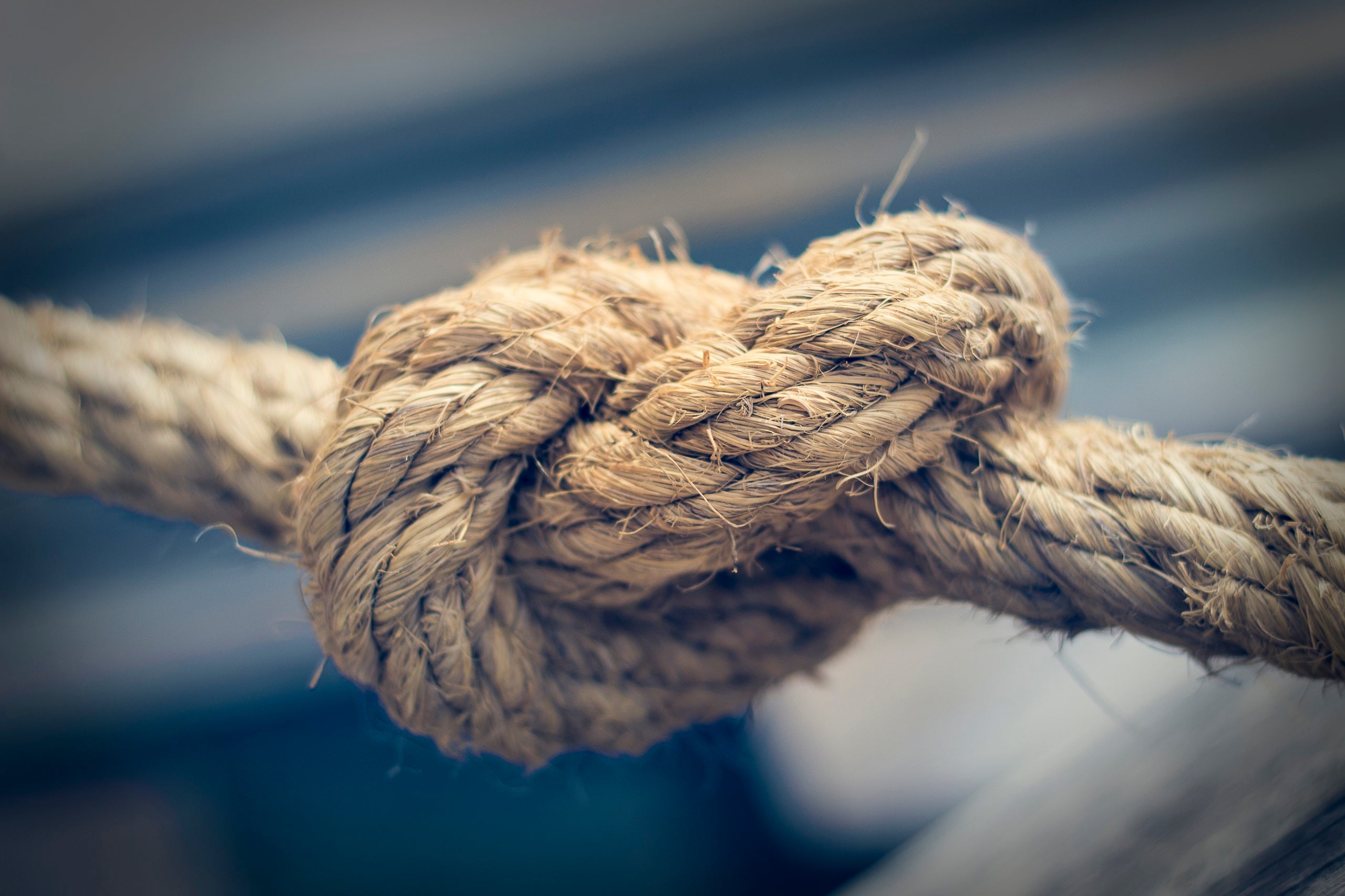
A knot is the nautical measure of speed used by cruise ships and other maritime vessels. One knot represents 1 nautical mile per hour.
But "knot" isn't simply a misspelled nickname for "naut" (as in nautical mile). Its origins are far more literal, according to the United States' National Ocean Service .
In the 17th century, ship crews measured vessel speed by tossing a rope with several evenly spaced knots and a triangular-shaped piece of wood into the water. As the ship moved, currents created resistance against the wood, causing more rope to be pulled into the water over a specified period of time. When time was up, crew members would pull the rope in and count the knots.
In short, the number of knots pulled out into the water over a specific period of time translated into the speed of the vessel's travel.
How fast is a knot in miles per hour?
When you convert 1 knot to miles per hour, it works out to 1.15 standard miles per hour for every nautical mile per hour. That's knot speed. So, although land-based miles per hour are just slightly faster than knots, for general purposes, it's a close comparison. For example, if your ship is sailing 20 knots, it's sailing roughly 23 mph.
How fast do cruise ships go?
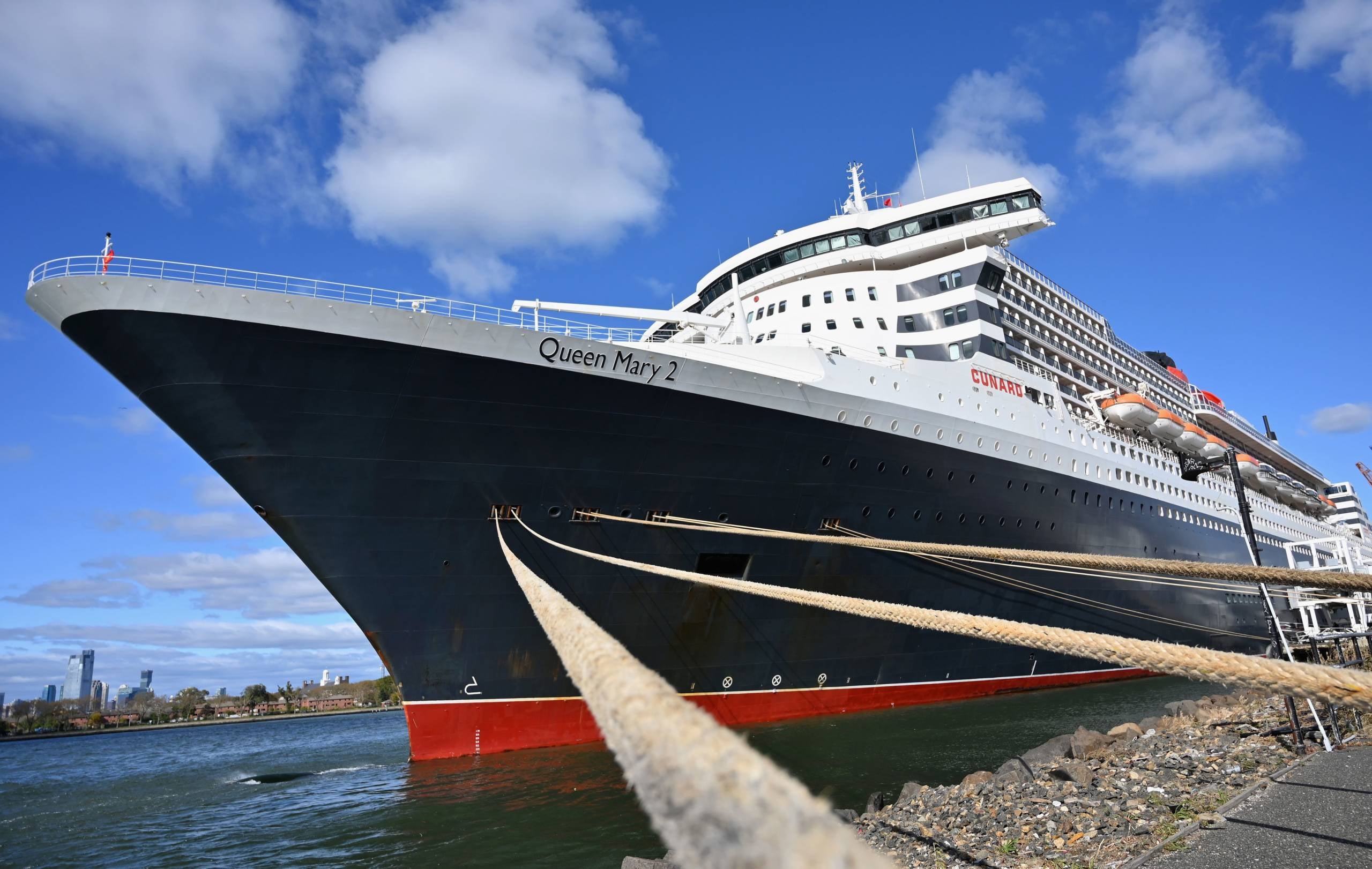
What is the maximum speed of a cruise ship? The maximum speed for most modern vessels is about 30 knots or 34.5 mph, but just because they can glide along that fast doesn't mean they actually do, or at least not all the time.
Officers on the bridge will adjust speed to account for weather and ocean conditions — rough seas and high winds mean slower speeds — and port arrival times. Early arrival into port can come with extra fees that cruise lines are loath to incur, which usually means they prefer to take their time by slowing their speed.
What is the average cruise ship speed?
Cruise ship average speed is affected by lots of outside forces, as mentioned above. In relatively calm conditions, the average present-day vessel travels about 20 knots or 23 mph between ports of call.
What is the fastest cruise ship?
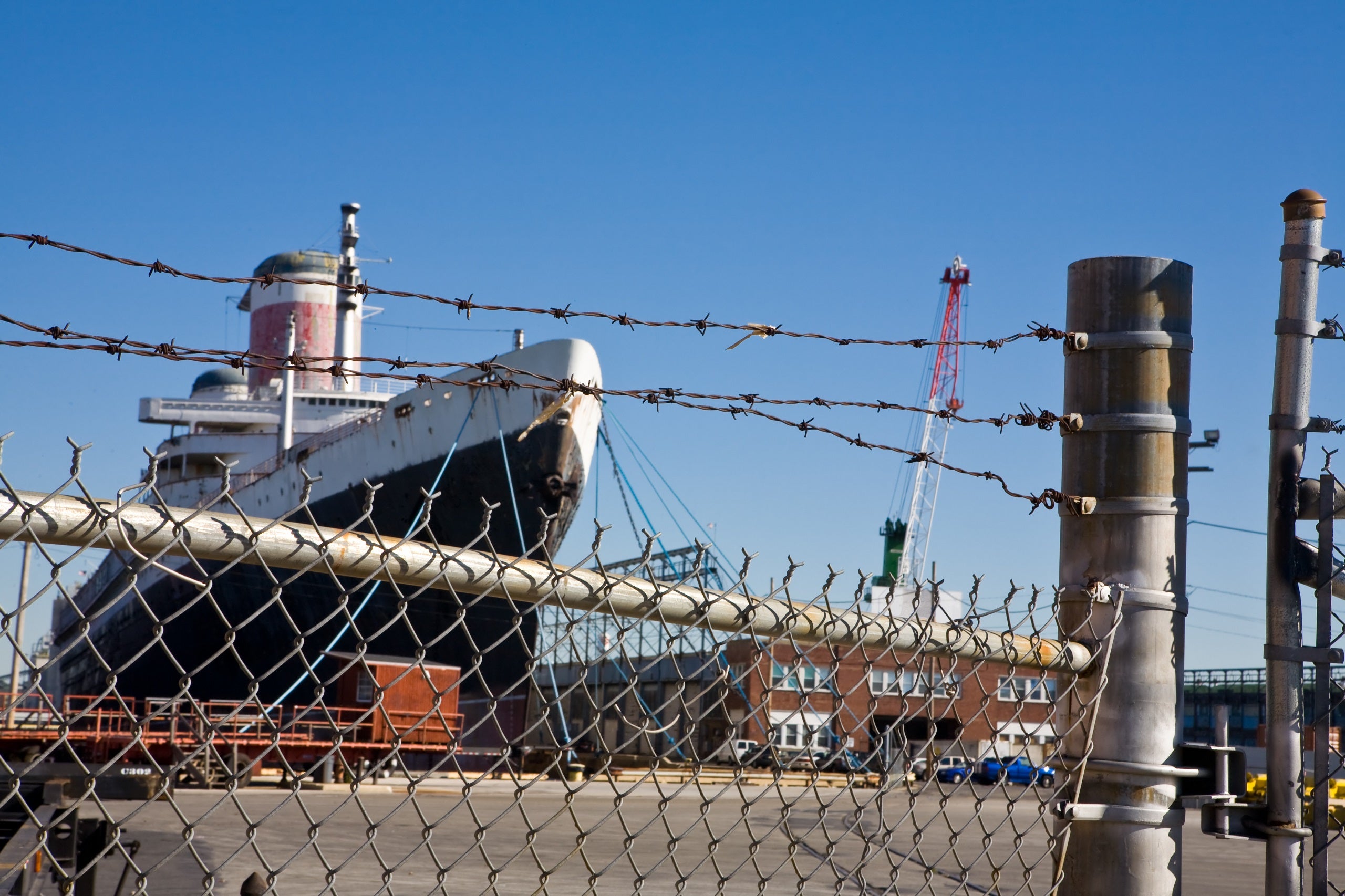
Currently, the fastest cruise ship that's operational is Cunard Line's Queen Mary 2, which often serves as an ocean liner to ferry people back and forth between the U.S. and the United Kingdom. Its maximum speed is 30 knots.
Cunard, which has operated historically fast vessels throughout the years, won the Blue Riband — a coveted prize for the ship to cross between the U.S. and Europe while maintaining the highest speed — 18 times. The last ship in the fleet to hold the unofficial award, which dates back to the 1800s, was Queen Mary, which is currently a floating hotel in Long Beach, California, near Los Angeles.
Queen Mary was dethroned as the winner in 1952 by SS United States, which was operated by rival United States Lines and made the crossing in just three days, 10 hours and 40 minutes at a speed of nearly 35.6 knots or almost 41 mph. (Its maximum speed was 39 knots or about 45 mph.)
Today, SS United States is docked in Philadelphia and maintained by a nonprofit conservancy that hopes to find investors to restore the languishing liner, which is now more than 70 years old. It might not be operational, but its previous accolades make it the fastest passenger vessel currently afloat.
Planning a cruise? Start with these stories:
- The 5 most desirable cabin locations on any cruise ship
- A beginners guide to picking a cruise line
- The 8 worst cabin locations on any cruise ship
- A quick guide to the most popular cruise lines
- 21 tips and tricks that will make your cruise go smoothly
- 15 ways cruisers waste money
- 12 best cruises for people who never want to grow up
- The ultimate guide to what to pack for a cruise

Cruise Ship Speed: Exploring the Velocity of these Seafaring Giants
Cruise Ship Speed: If you have ever cruised on one of these enormous floating towns, you are familiar with the experience of unwinding on the upper deck while taking in the view of the horizon as your ship makes its way to the next port.
You’ve probably wondered, as you cruise across the ocean, just how quickly cruise ships go.
What’s the speed of a cruise ship?
These days, a modern cruise ship will typically travel at 21 knots or roughly 24 miles per hour. The maximum speed of a cruise ship is two to three knots faster than its average speed. Nevertheless, cruise ships hardly ever attain their top speed unless they are engaged in sea trials, evading inclement weather, or responding to crises.
Cruise ship speeds differ based on the particular vessel. For example, Norwegian Cruise Line’s Norwegian Jade can attain speeds of up to 24.6 mph, while Royal Caribbean’s Oasis of the Seas cruises at roughly 20.2 knots. It’s crucial to remember, though, that cruise ships often put passengers’ comfort and fuel efficiency ahead of speed.
As a result, cruise ships frequently go slower than they are capable of. In addition to saving fuel, slower speeds give passengers a more comfortable trip.
With a top speed of thirty mph, the Queen Mary 2 is the fastest cruise ship currently in operation.
Factors Affecting Cruise Ship Speed

There are many factors that can affect a cruise ship’s speed, including:
- Cruise Itinerary: Each port of call requires cruise ships to arrive on schedule. Being late to a port can result in heavy fines and disgruntled travelers who miss out on their shore excursions. On the other hand, coming early causes the cruise ship to go faster than is necessary, which results in unnecessary fuel use.
- Weather: Unfavorable weather conditions, including strong gusts or choppy waves, can greatly affect a ship’s speed. To protect the safety and comfort of passengers in choppy conditions, ships occasionally have to slow down. Additionally, cruise ships move more quickly to avoid dangerous weather conditions. There aren’t many occasions when a cruise ship will attain its maximum speed.
- Water Conditions: The state of the water, including currents and tides, may help or hinder a ship’s journey. For example, a ship can go faster while sailing with a strong current and slower when sailing against it. Fuel Efficiency: Cruise ships sail at speeds that maximize fuel efficiency and allow them to dock on schedule. To preserve fuel economy, lessen environmental effects, and save fuel expenses, ships may travel at a more moderate speed.
- Navigational Restrictions: To maintain safety and reduce environmental effects, speed limits may apply in some areas, such as environmentally sensitive areas or small canals. Cruise ships prioritize the comfort and experience of their passengers. Cruise ships move at speeds that guarantee the smoothest possible ride, reducing tremors and vibrations that could make passengers uncomfortable or seasick.
- Regulations for safety: A ship’s speed may also depend on factors related to safety, such as avoiding collisions with other ships or safely navigating through congested or hazardous areas. The ship’s captain and navigation staff weigh each of these variables to decide which speed is best in a particular scenario while maintaining passenger comfort, safety, and efficiency.
How Do You Make a Knot?

A knot is a measurement of speed used in aviation and maritime travel. As one nautical mile per hour, it is defined.
A nautical mile is what? It is a unit of measurement based on the circumference of the Earth and equal to one latitude per minute. This indicates that it is roughly 1.852 kilometers or 1.15078 miles.
Imagine the circle of the Earth divided into 360 degrees, then further divide each degree into 60 minutes to better understand this. A nautical mile is equal to each of these minutes.
A nautical mile is frequently referred to as “minutes of arc” when navigating.
In what way does this resemble the well-known land mile? In other words, a knot is approximately 15.1% longer than a statute mile, or mile on land.
Because knots line up with Earth’s latitude, they are more useful for long-distance travel when Earth’s curvature counts in maritime and aviation navigation.
Fascinating is the history of these measures. Originally from Roman times, the land mile was one thousand paces, counting just the left foot. Following that, Queen Elizabeth I set the statute mile at 5,280 feet in 1593. The Latin phrase “mille passus,” which means “thousand paces,” is where the word “mile” originates.
Conversely, nautical miles, which were first defined in 1929, are based on the latitudinal degrees of the Earth; one nautical mile is equivalent to one minute of latitude.
It is more feasible to use latitude and longitude coordinates for long-distance travel, as the Earth’s curvature becomes a factor in precise measurement, according to the NOAA.
Why Do Cruise Ships Not Use Miles Per Hour, But Knots?
Long-distance navigators (ships, aircraft, and rockets) use latitude and longitude to calculate distances on a map.
Because nautical miles make it possible for sailors to rapidly access distance on nautical maps that employ latitude and longitude, they are the primary unit of measurement when at sea.
Fun fact: Nautical miles are another unit of measurement used in space and aviation travel.
How Do You Convert Miles Per Hour from Knots?
You only need to multiply a speed in knots by 1.1508 to translate it to miles per hour. The speed in miles per hour is the outcome.
What is a Knot and How Fast Is it? All you need to know
What Cruise Ship is the Fastest?

The world’s fastest cruise ship, Queen Mary 2 of Cunard Line, is moored off the coast of Saint Lucia. With a top speed of 30 knots, Cunard’s Queen Mary 2 is often regarded as the fastest cruise liner. However, Queen Mary 2 is an ocean liner rather than a cruise ship.
Originally, the ship was designed to carry people across the Atlantic. A ship with an ocean liner has a lower center of gravity, higher lifeboats, a reinforced hull, and a pointed bow.
An ocean liner is defined as a ship whose main function is transportation, whereas a cruise ship is constructed for leisure.
To the best of my knowledge, there isn’t an official fastest cruise ship.
Furthermore, it is not necessary.
Cruise ships are meant to be relaxing vessels. As I lounge on the deck, sipping a refreshing tropical beverage, I’m not thinking about how quickly our ship is sailing.
Which cruise ship is the quickest, then, and does it matter?
Which ocean liner in history is the fastest?
SS America is the fastest ocean liner in the world. The Queen Mary 2 is the fastest ocean liner currently in service, yet it wasn’t the fastest ship ever constructed.
Ocean liners competed to make the fastest Atlantic crossing in the years following World War II.
The SS United States, which could reach a maximum speed of 39 knots and an average cruising speed of 35.5 knots, was the fastest ship in the world in 1952. A record that stands to this day!
Related Posts


Best time to book a Cruise
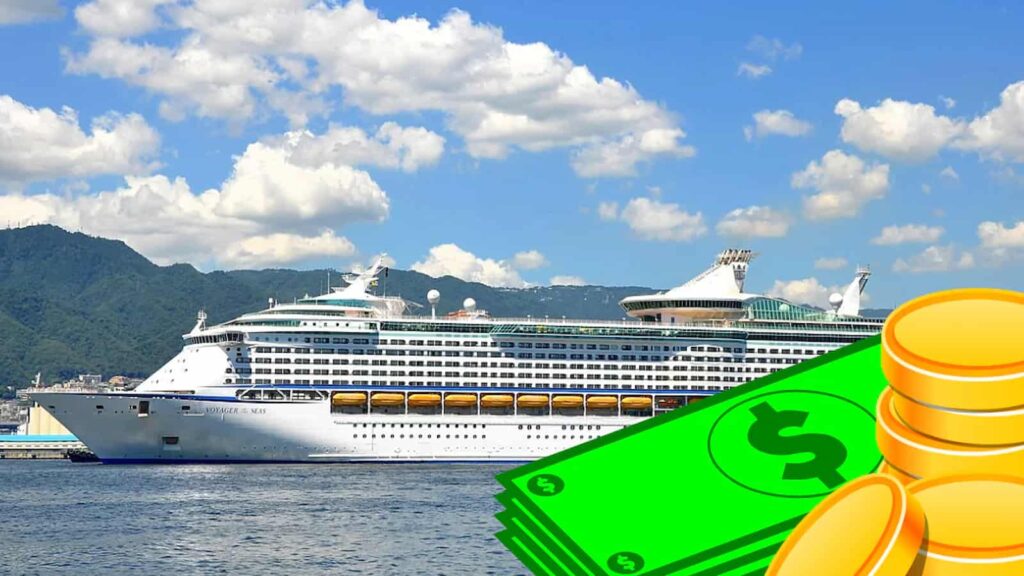
Cruise Ship Salaries: A Comprehensive Analysis
Leave a comment cancel reply.
Your email address will not be published. Required fields are marked *
Save my name, email, and website in this browser for the next time I comment.

Ship Speed: How Fast Does a Cruise Ship Go?

If you’ve ever sipped a beverage on a sun-kissed deck, you’ve probably wondered, “ How fast does a cruise ship go ?” It can’t be denied that a lot of concepts surrounding cruise ships can both excite and intrigue many of us. But let’s get real, the romance of the high seas and the unlimited buffet isn’t our only curiosity.
The purpose of this fun-filled piece? Well, we’re sailing full speed ahead into the captivating world of top-speed cruise ships and ship velocity. Yes, you heard it right! We’re set to answer that million-dollar question – just how swiftly do cruise ships carve their way through the waters? Strap on your lifejackets, folks. It’s time to dive deep into the world of nautical numbers and seafaring speed!
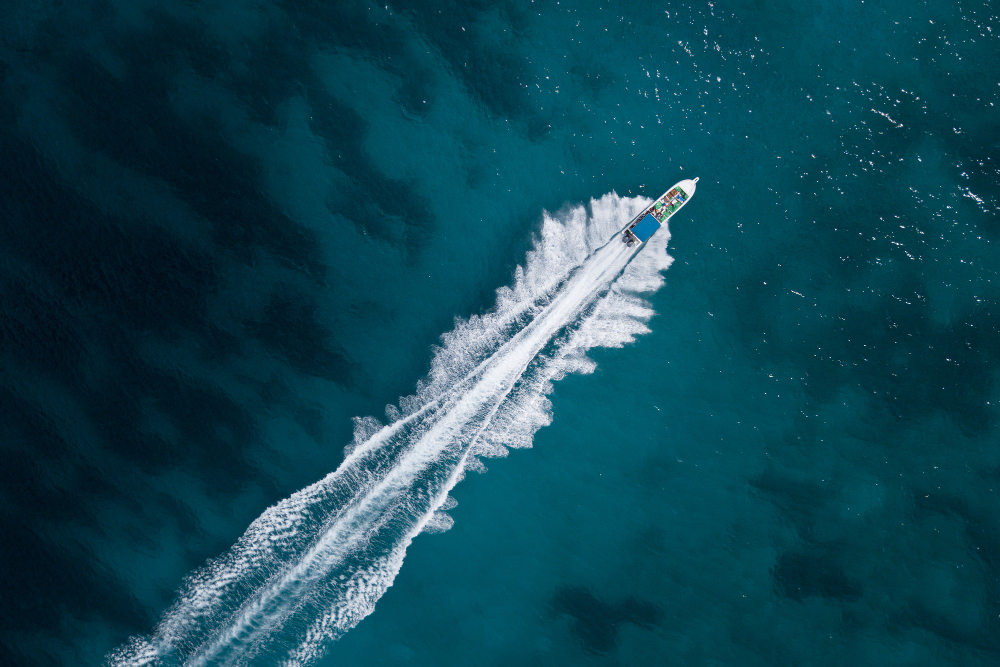
Understanding Ship Speed
Before we start, it’s essential to understand that the speed of ships is measured differently than we’re used to on land. Instead of miles per hour, sailors use nautical miles and knots.
A knot is just another way to measure speed. One knot equals one nautical mile per hour . To put that into perspective, one knot is about 1.15 regular miles per hour (the speed measurement we use on land). So, when you’re comparing speed in different contexts—on land, air, or sea—remember that the units of measurement aren’t the same. Learning about this is your first-class ticket to the nautical lingo club.
How Fast Does a Cruise Ship Go?
Now that you know the concept of ship speed, let’s dive into the meaty bit — how fast do cruise ships go? Most modern cruise ships — from the dazzling Royal Caribbean vessels to your everyday ocean liners — glide through the seas at an average speed of about 20-30 knots . That’s roughly 23-34 mph on land. Yep, that’s slower than your average bicycle race, but hey, we’re on holiday, right?
Now, the speed of most cruise ships isn’t just a “one knot fits all” deal. Several factors affect the average cruise ship speed. Everything from the ship’s design, the weather (rough seas require slower speeds), and even fuel efficiency come into play. It’s a delicate dance, or should we say, a well-coordinated sea shanty of factors that keeps these vessels smoothly sailing to your next port of call.
Comparison of Speeds of Different Cruise Ships

Let’s look at our cruise ship heavyweights: Royal Caribbean , Carnival Cruise Line, Norwegian Cruise Line, and the rest of the maritime band.
Royal Caribbean’s grand fleet, despite its majestic size, generally maintains a comfortable, fuel-efficient cruising speed of about 18-20 knots . Not bad for a floating city, eh? Carnival Cruise Line’s fun ships aren’t far behind, averaging around 21 knots . A snail’s race, but a race nonetheless!
As for our friends at Norwegian Cruise Line, they are typically cruising at a maximum speed of around 24 knots . It’s not really about going fast, but more about a relaxing journey on the ocean.
How Cruise Ship Speed Affects Itinerary

So, here’s the scoop on how speed affects your itinerary on the high seas.
You see, the speed of a cruise- ship’s speed top isn’t just about how fast it can zip from Miami to the Bahamas. It’s a delicate balancing act between ensuring you reach your next exciting port on time and providing a smooth and enjoyable journey. If your cruise ship decided to mimic a speedboat, well, let’s just say that poolside margarita might end up in your lap instead of your mouth. Not quite the vacation memory you were hoping for, right?
Cruise lines are expert jugglers, managing this balance with the finesse of a seasoned trapeze artist. They map out itineraries that mix scenic slow cruising (perfect for soaking up sunsets) with necessary bursts of speed to keep up with the schedule. In essence, they’re trying to maximize your time exploring fantastic ports and minimize the time you’re asking, “Are we there yet?”
The moral of the story? No need for ludicrous speed on the love boat. Your cruise is about the journey, not just the destination. After all, the only race on a cruise should be the one for the last deck chair!
Speed Constraints: Why Do Cruise Ships Travel at a Slower Speed?
Now, you might be asking, “Why don’t cruise ships just crank up the speed and zip us straight to paradise?” Well, I hate to break it to you, but it’s not all about you! There’s a method to the maritime madness.
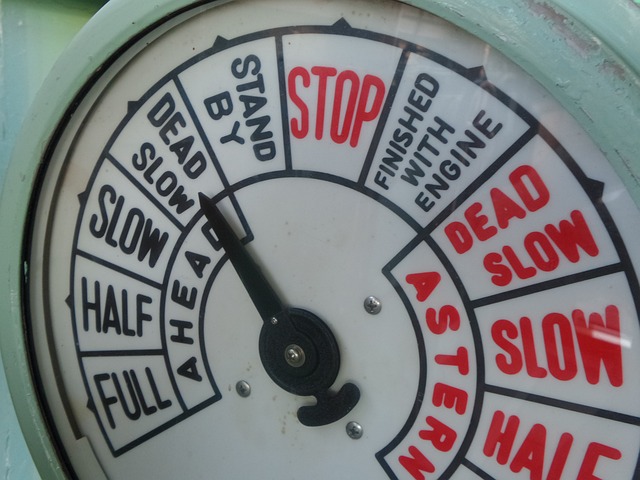
Our nautical buddies, the cruise ships, have to play nice with Mother Nature and Uncle Sam. You see, environmental factors such as wind, waves, and weather that affect cruise ship speed can mean it’s safer and more comfortable (nobody wants seasickness!) to slow things down a notch. Imagine trying to navigate through rough seas at top speed – even the sturdiest of cruise ships could start feeling like a cork bobbing in a bathtub!
Plus, there are all sorts of fun legal and safety constraints. Speed limits in certain areas protect marine life (you wouldn’t want to upset the dolphins, would you?) and help prevent accidents. And let’s not forget fuel efficiency . High speeds guzzle more fuel, which is bad for both the environment and the cruise line’s pocket.
So, while cruise ships may not always be setting speed records, remember they’re prioritizing smooth sailing and keeping Flipper and his friends happy. And really, who can argue with that?
What Are the Fastest Cruise Ships?
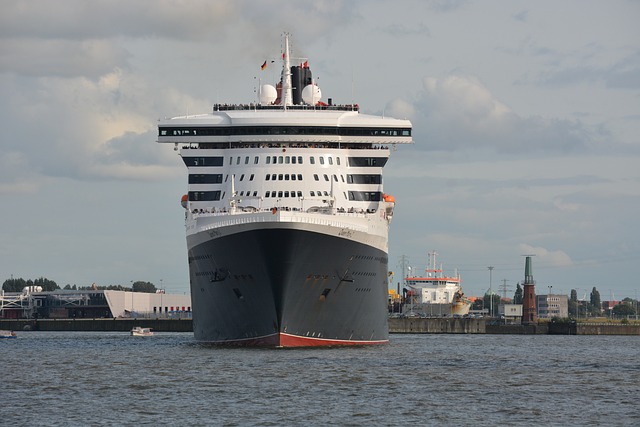
First up, let’s pay our respects to the fastest cruise ship of the Queen – Queen Mary 2 , that is. This ocean liner (technically not a cruise ship, but who’s counting?) holds the title for the fastest passenger ship, capable of speeds up to a staggering 30 knots. If you’re late for high tea in England, she’s your best bet.
Now, among the bona fide cruise ships, the ‘Need for Speed’ award goes to Cunard . These ships, while known for their entertainment offerings and sheer size.
They aren’t just about speed though. They are loaded with features to enhance passenger comfort, from stabilizers to reduce roll in rough seas, to high-tech navigation systems, and let’s not forget the zip lines and surf simulators for when you tire of the shuffleboard.
Innovations and Future of Cruise Ship Speed
Now, let’s take a futuristic glimpse at the world of cruise ship speeds. With new technological advancements popping up faster than the bubbles in your average cruise ship with champagne, the horizon of cruising speed is set for a shakeup.

For starters, we are seeing the dawn of a new era with the introduction of LNG-powered engines. These bad boys not only have the potential to rev up the ship’s speed, but they also come with added environmental brownie points for reduced emissions.
Speaking of innovative design enhancements, have you heard about the hull design tweaks ? Scientists, engineers, and what I can only assume are maritime magicians working on optimizing hull shapes to reduce water resistance and hence increase ship speed. Yes, folks, we’re talking about cruise ships potentially sporting the marine version of aerodynamic curves. Picture the fastest cruise ship with a sleek figure like a runway model, if you will.
But while we’re pushing boundaries in speed, we’re also eyeing efficiency and sustainability. Future cruise ships are likely to feature cutting-edge environmental protection and fuel-saving systems. So, we’re striving for a future where your modern cruise ship doesn’t just take you places fast but also does it while giving Earth a friendly nod.
To sum it up, the future of cruise ship speed is looking just as bright and promising as the neon dancefloor on the disco night of your cruise.
Alright, my fellow cruise ship enthusiasts, let’s wrap this up. So, the need for speed on the high seas isn’t just about getting you to the buffet faster. Rather, it’s a delicate ballet of factors, from hull design to ocean currents, and even those legal regulations.
Our beloved floating resorts aim to strike a perfect balance between getting you to your next margarita and ensuring you don’t spill it in the process. It’s about harnessing the power of modern vessels and also ensuring smooth sailing with an emphasis on comfort and efficiency.
The moral of the story? Fast or slow, just remember, the true joy of cruising isn’t just about how quickly you get there, but rather the journey itself – preferably with a tropical drink in hand!
How fast do Royal Caribbean ships go?
Ah, the Royal Caribbean , they’re not just royal by name, but also by speed. On average, the Royal Caribbean cruise ships go a comfortable pace of about 18-21 knots. But remember, this can fluctuate based on factors like weather, ocean conditions, or if the captain’s late for his tea time.
How far can a cruise ship travel in 24 hours?
Well, if we stick to the average cruising speed of about 20 knots, which is roughly equivalent to 23 miles per hour, cruise ships go about 550 nautical miles in 24 hours. However, don’t start packing your bags just yet, as actual distances can vary depending on multiple factors.
Who has the fastest cruise ship?
The cheetah of the cruise ship Savannah is none other than the SS United States. She roars across the waves at a speed of nearly 38 knots. But remember, she’s more of an ocean liner than a traditional cruise ship.
What is faster a cruise ship or a car?
While your car could easily leave a cruise ship in its wake on land, in the open ocean, it’s a whole different ball game. On average, cars can go about 60-70 miles per hour, while cruise ships go around 20-30 miles per hour. But, remember, while your car may win the speed race, it definitely can’t match the luxury of a cruise ship. After all, does your car have 24/7 room service and nightly shows? I didn’t think so.
Digital Marketer
I’m Bobby Pham, but you can call me “Bobby on Cruise.” I’ve been cruising the high seas and exploring the world for years, and I’m thrilled to share my passion and expertise with you. When not cruising, I spend my time on growing my marketing agency.
About FunkyCruise
We make money helping people book cruises, and from advertisers / affiliate partners. As an Amazon Associate, I earn from qualifying purchases.
How Fast Does A Cruise Ship Go?
Cruise ships are not designed to go fast. Unlike ocean liners that once sailed regularly between the UK and United States across the Atlantic, most cruise ships are designed to go relatively slow at a steady pace with passenger comfort and environmental efficiency the primary consideration. This is a key difference since it is rare that you will see a cruise ship travel at maximum speed and so there is the practical speed that you might experience as a cruise passenger and the maximum theoretical speed that you might see listed alongside other statistics about an individual cruise ship.
Cruise Ship Top Speed vs Ocean Liner Top Speed
Novice cruisers might get ocean liners and cruise ships confused but while they each are designed to carry passengers on vacation, they are designed for different purposes. Ocean Liners such as Cunard Line's Queen Mary 2 (currently the world's fastest ocean liner) are designed as transportation taking people from one destination to the next as quickly as possible. The modern cruise ship evolved from ocean liners but on an Alaska cruise for instance, the ports are close together so you don't necessarily need to go faster. A difference between 18 knots and 30 knots (35 mph) might only make the difference.
As an example, consider two Alaska cruise ships ports of Juneau and Skagway . They are roughly 86 miles apart. At 30 knots this is a 2 hour and 52-minute journey but at 22.5 knots (Norwegian Bliss top speed) the journey is 3 hours 49 minutes. While that's an extra 1 hour of travel time at max speed, the reality is that there's no need to even go that fast between those two ports. In fact, on one Alaska cruise itinerary for 2021, Norwegian Bliss is scheduled to depart Juneau at 11 pm on Monday and arrive in Skagway at 7 am the next morning. That's a scheduled journey of eight hours or an average speed of only 10.7 knots.
On the other hand, an ocean liner such as Queen Mary 2 traveling from Southhampton, England, UK to New York City travels a distance of roughly 3,000 miles with no port calls. That voyage is approximately 100 hours of travel time over seven days at the Queen Mary 2's top speed of 30 knots. While Norwegian Bliss doesn't do point to point transatlantic cruises like this, that same voyage at her top speed of 22.5 knots would add an extra 33 hours of travel time! However, even in this theoretical scenario, you'll notice that you could travel that distance in just over 4 days at top speed, but Cunard schedules her to do the journey over the course of six full days at sea.
Just like with air travel, you'll notice that older ocean liners actually traveled faster. In fact, the SS United States remains the fastest ocean liner ever built and it averaged 34.51 knots on its record-breaking transatlantic maiden voyage in 1951.
As you compare how fast cruise ships go compared to ocean liners, you will also notice other design elements that allow an ocean liner to travel faster through the water. This includes a generally more sharply angled bow and narrower beam. These all help reduce friction and help make the ship sail faster from port to port. Today's cruise ships - while still designed to carry passengers on vacation - are a completely different type of ship.
So, How Fast Does A Cruise Ship Go?
A cruise ship on the other hand isn't focused on traveling as fast as possible. The question of, "How fast is a cruise ship?" is a bit more complicated since the speed of a cruise ship is dictated as much by fuel economy as it is by the ability of cruise ship engineers and the captain's desire to go fast. In fact, just like the scenario above with Alaska cruises , with Caribbean cruises, and west coast cruises to Mexico, you'll notice the same pattern. With a few exceptions - such as cruises from San Diego and Los Angles to Hawaii, most cruise ports on your itinerary are close enough to allow the ship to travel overnight. This is why your port departure time might vary sometimes from 4 pm to 7 pm but you almost always arrive sometime around 7-8 am, just in time to start your day exploring the destination.
In my experience, a cruise ship almost never travels the full speed. Instead, you'll notice that 18-20 knots is about the average cruising speed of a cruise ship. This allows the ship to cut through the waves easily for maximum passenger comfort while still having extra speed available if the captain needs the ship to avoid weather or there's an issue somewhere that delays departure or arrival.
Are You Ready For A Cruise?
Please fill out the form below and Heather from Flow Voyages (or a representative from CruiseWestCoast.com) will contact you as soon as possible.
For immediate help, please contact Heather directly: 630-779-9301 or : [email protected]
When it comes to designing new cruise ships, speed is absolutely taken into account. For instance, you will notice that on average ships from Carnival Cruise Line are slightly slower than those from Holland America Line. This is because while Carnival's cruise ships are designed to travel slowly between ports that are close together in the Caribbean primarily, Holland America Line cruise ships often travel long distances between ports and so speed is an important factor that could reduce a voyage with three sea days to only two for instance.
Interestingly though, while you would think that smaller cruise ships could travel faster, this isn't always true. For example, Viking Ocean's current generation of cruise ships such as the Viking Star (47,842 GT) is rated at only 20 knots maximum speed with a 17-knot service speed. Compare that to 79,300 for Queen Mary 2 and 168,028 for Norwegian Bliss. Royal Caribbean's Symphony of the Seas and Odyssey of The Seas have a max speed of 22 knots.
Small Luxury Cruise Ships Speeds Also Aren't Fast
You might think that small luxury cruise ships where saving money wasn't as important would be much faster. However, once again we find that cruise ship speed is dictated by practicality rather than how fast can they go.
For instance, Scenic Eclipse (17,545 GT), one of the most advanced and certainly among the most luxurious small ships is only able to travel at 17 knots with a maximum of 19.5. The same holds true for Seabourn Ovation (41,865 GT) who's cruising speed is 15 knots with a maximum speed of 18.6. Both ships are brand new and certainly could travel faster if they needed to but that's not the point.
When it comes to looking at how fast does a cruise ship go, the answer isn't technology or physical limitations. Instead, it is about how fast does a cruise ship need to go, combined with how much will it cost to go faster. Ultimately this is why, even as slow as cruise ships are compared to what you might think, they are among the fastest non-military vessels. For example, while a typical cruise ship might travel at an average speed of 20 knots, container ships travel at 16 knots and tankers travel at 13 knots.
With environmental concerns being a huge issue with cruise ship travel, it is unlikely that even the most luxurious cruise ships will challenge these speeds. In fact, Cunard Line's ships that have followed the Queen Mary 2 are also both smaller (90,901 GT) and sail at 23.7 knots. It is likely that their next vessel, currently unnamed but due in 2022 based on Holland America Line's Koningsdam, will be even slower since that vessel is rated at 18 knots with a maximum speed of 22 knots.

How Fast Do Cruise Ships Go?

June 21, 2023
The average speed of cruise ships is 20 knots (23 mph, 37 km/h), and the current fastest cruise ships are the MV Glory Sea ship and the Queen Mary 2 ship, both of these vessels can achieve a cruise speed of 30 knots (35 mph, 56 km/h).
The maximum speed ever recorded by a passenger ship is 39 knots (44.87 mph or 72.24 km/h) but this was achieved by the SS United States which is technically an ocean liner and not a cruise ship.
In this article you’ll learn more about the speed of cruise ships and the factors that influence how fast these impressive vessels can break through the waves.
Let’s explore!
What is a Knot?
How did the knot become the measuring speed of the seas, what is the difference between top speed and cruising speed, what was the fastest cruise ship in history, how these giant cruise ships can move themselves, cruise ship fuel usage: size vs. efficiency, 1. itinerary, 2. weather events, 3. emergencies, 4. fuel conservation.
A knot is a unit of speed used in maritime and air navigation as well as in meteorology.
1 knot is equal to 1 nautical mile per hour, or 1.15 mph and 1.852 km/h.
Ancient sailors measured the speed of their moving ships by throwing a floating object into the sea and then counting the time it took to pass the ship’s stern using a particular type of sandglass. Called the Dutchman’s log , this device became the standard tool for measuring speed until the 16th century.
At the end of the 16th century the Dutchman’s log was replaced by a newer device called the Chip log.

In this chip log, knots were tied at equidistant intervals in a rope and on the end of the rope a piece of wood was attached to it. To measure the speed of a boat, mariners used to toss the end of this rope behind the ship and allowed the rope to roll out freely.
By counting the knots that passed over the bow within a certain time, sailors measured the ship’s speed. For example, a ship traveling at 10 knots was said to go 10 nautical miles in an hour.
Cruise ships often choose a cruising speed or service speed that is comfortable for passengers. This will be somewhere below the fastest possible speed the vessel can reach. The cruising speed also takes fuel consumption into account.

The top speed of ships differs from their comfortable service speed. The route of a particular ship affects its speed, and cruise ships rarely travel at a speed that would make it uncomfortable for passengers. Also, traveling at the fastest possible speed with all engines open would hurt efforts to conserve fuel and travel efficiently.
For closer ports, captains may opt to travel more slowly. For farther destinations, a ship may take on additional speed in open waters where it can travel more efficiently.
Sometimes, ships float or idle to allow guests to enjoy scenic venues. In Hawaii, cruise ships often pause to let passengers take pictures of erupting volcanoes. Similarly, cruise ships in Alaska pause for weather and glaciers for safety reasons.

Launched in 1969, Cunard’s Queen Elizabeth 2 faithfully toted passengers until it was decommissioned in 2008. The QE2 was intentionally built to be the world’s fastest passenger ship. Her service speed alone was over 28 knots. To reach this heady speed, the ship used only seven engines. This left two in reserve to allow for non-disruptive maintenance. Reputedly, the QE2 had a top speed of 34 knots.
This speed came at a cost. The 963-foot ship took one gallon of fuel to move forward 50 feet. With 10 gallons of fuel, she could travel 500 feet.
- Top Speed: 34 knots or 39 mph
- Displacement: 49,800 tons
- Capacity: 2,900 passengers and crew
- Status: Now a floating hotel in Dubai

Launched in 2004, the Queen Mary 2 is Cunard’s new flagship. At that time, it was the longest and biggest ship in the world — a title now held by Royal Caribbean’s Freedom of the Seas . It was the longest and largest ship on the oceans. The QM2 is the only transatlantic cruise ship currently in operation, and it offers one annual cruise that crosses the Atlantic. The mega-ship is still the largest ship under commission, with a service speed of 26 knots.
- Top Speed: 30 knots (34.5 mph)
- Displacement: 79,300 tons
- Capacity: 3,950 passengers and crew
- Status: Still in operation

What powers these behemoths of the sea? Without powerful engines , cruise ships would never make it out of port.
Diesel reciprocating engines power older cruise ships. The engines supply the power to turn propeller shafts that move the boat by displacing water. A transmission system connecting the engines to the propellers determines how fast the propellers move, thus the speed of the boat.
Many modern ships use gas turbines or diesel-electric engines to propel the boat and power shipboard systems. Larger ships may incorporate two power sources for propulsion and electrical power, respectively.
Gas turbine engines create heat and transform it into mechanical energy to produce electricity. In a combustion chamber, these engines compress hot air. The hot exhaust is used by a turbine that spins a shaft that in turn spends the generators. This is similar to how diesel-electric engines operate. The output shafts connect to generators to create electricity.
Both these engines gobble up tons of fuel. The QE2 used 380 tons of fuel every day to achieve 29 knots per hour. The large ship carried enough fuel to last 12 days between ports. Usually, ships use fueling barges to fill their tanks or top up at their ports of call. Using lower-grade diesel, the powerful engines that power these boats are not as efficient as diesel used in cars and trucks.
Currently, all cruise ships use propellers or screws to push the vessel through the water or to go in reverse. Airplanes require very fast propeller speeds to move through the air. However, ships rely on torque power, move more slowly, and rarely top 30 knots due to the effect on the passengers and crew.

Size affects fuel consumption and, therefore, efficiency on cruise ships. Smaller ships consume less fuel for trips of the same distance. The average speed also impacts fuel consumption, a fact any captain is keenly aware of. The average ship uses 250 tons of fuel per day . That’s a whopping 80,000 gallons per day or 800,000 gallons for a 10-day trip!
Just like a car on the highway, higher speeds for ships create aerodynamic drag. This requires more fuel to maintain the same speed. Most cruise ships maintain a speed of 21 to 24 knots to avoid aerodynamic drag that could eat up the ship’s fuel supply. Running out of gas in the middle of the ocean is obviously not an option.
In general, cruise ships up to 1,100 feet long must carry as much as two million gallons of fuel to make the trip between ports of call. In comparison, a private motor yacht that’s 60 feet long carries up to 1,200 gallons while the Exxon Valdez holds 55 million gallons of fuel.
Royal Caribbean’s Harmony has four-story-high engines. It burns through nearly 1,400 gallons of fuel every hour. That’s 66,000 gallons every day, which creates a lot of pollution. In recent years, there has been enormous regulatory pressure to make big ships friendlier to the environment and the ocean that they sail on.

What Impacts the Speed of Ships?
Assuming a cruise ship is optimally designed for weight load, its speed will be the square root of its horsepower divided by weight. However, operators who want to improve their speed cannot just offload some weight and expect to achieve maximum speed. Where the weight lies matters just as much. For example, front-loading the boat creates drag and slows it down.
Besides, traveling at top speed doesn’t present the most comfortable ride for passengers. That’s why captains take their time and travel at comfortable average cruising speeds.
Here are several factors that impact how fast a cruise ship goes:
Cruise ships crossing the Gulf of Alaska often slow down to let passengers share close encounters with the magical sea life in the area. Sometimes, ships have to slow down because of unfavorable sea conditions that cause rough water and high waves. At other times, cruise ships slow down for beautiful views of coastal cities and natural attractions such as volcanoes.

Passengers may also note that boats slow in shallow water such as that found close to harbors. This prevents the boat from unexpectedly running into objects at low tide or in shallow seas. In open water, ships often move much faster toward faraway destinations. There’s more room to maneuver in deep water far away from populated areas.
Just as heavy wind and rain impact how fast a car can go on land, the weather at sea greatly impacts the speed of cruise ships. The direction of the wind can improve the average speed of a boat if it comes from astern, or behind the boat, pushing the cruise ship in the direction it’s traveling. On the other hand, a headwind pushing against the bow or front of the boat can significantly slow it down, requiring more energy to travel at the same speed. Wind shear from wind hitting the boat from either side creates drag and makes it harder for the boat to move forward, consuming more fuel than a calm sea or one with a lucky tailwind.

Captains often decide to idle in position or increase speed to wait out or outrun a storm.
Thankfully, emergencies don’t happen all that often on the high seas aboard a cruise ship. If someone falls off the boat, the ship has to slow down and turn around to attempt to rescue. Sometimes, another vessel requires assistance, and the crew prepares the boat for top speed to answer the SOS. In case of an outbreak of illness or disease on board, ships sometimes must anchor offshore or cruise around until they are cleared to enter their port of call.

Moving at slower speeds helps to conserve fuel. Ships drilling their way through the water experience more resistance than a car cruising down the highway. This results in monstrous energy consumption and big boats burn through fuel fast when traveling at top speeds.
Imagine a cruise ship that requires nearly 225 tons of fuel every day to achieve an average cruising speed of 24 knots. By decreasing its speed by three knots per hour, this ship could save 75 tons of fuel a day. With potential savings in fuel and cost of 33%, slowing down is better for the environment and the owner who writes the check to the fuel company.
About the author

Travel Reporter & Editorial Director
Ph.D. in Geography, Travel Photographer, and Software Engineer. Been on 4 continents and loved them all.
Latest Posts

Travel Blog
Most Hotel Rooms are Terrible: They Don’t Prioritize a Good Night’s Sleep
Read more →

200 Original Travel Slogans that are actually Great

Behind the Hype: 17 Myths About Being a Digital Nomad
Travel Guides You Can Trust
About Travelness
Brand Assets
Recent Posts
Tours & Activities
Tours in Europe
Digital Security
© 2024 Travelness. All Rights Reserved.
Terms of use - Privacy policy
- +1 (866) 622-3344
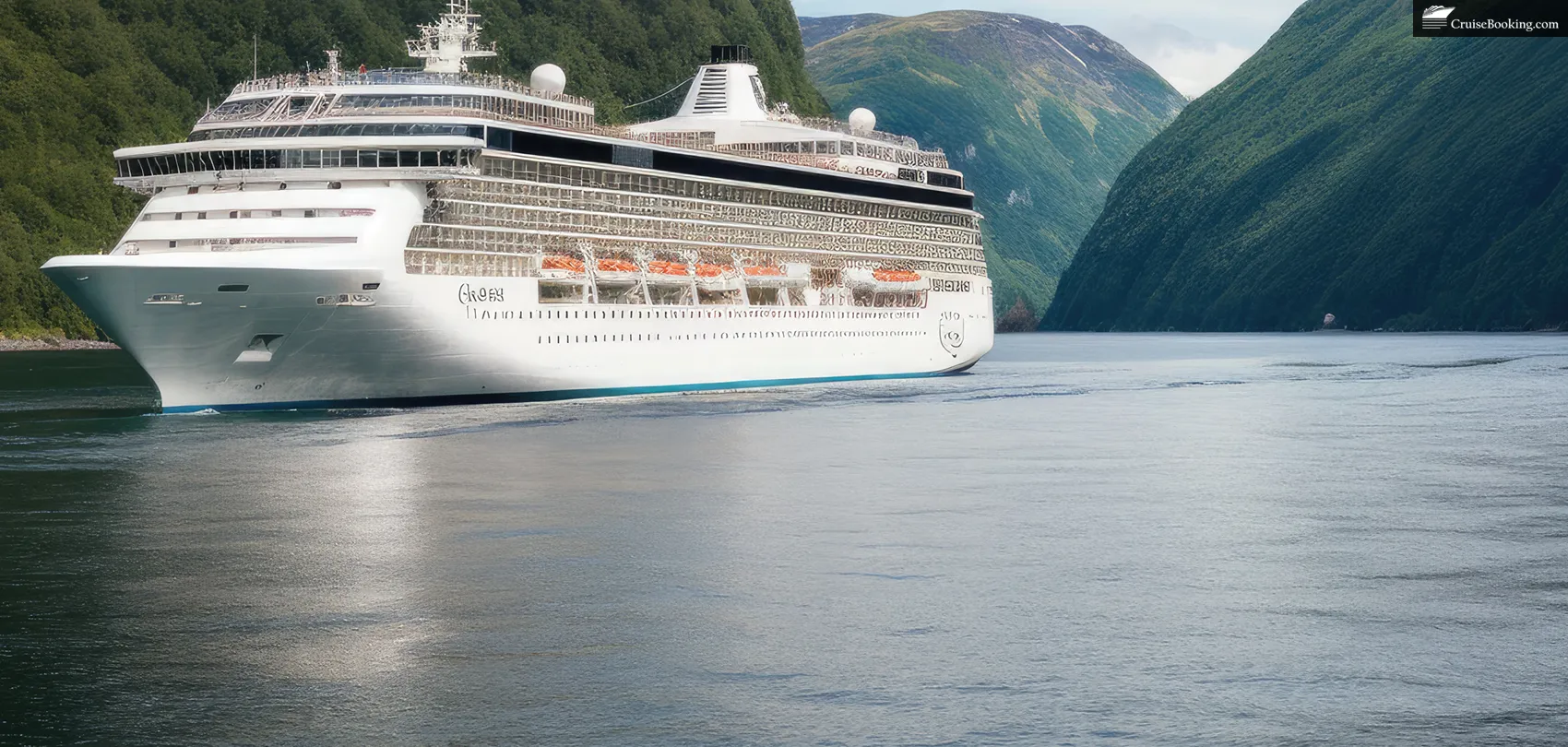
- Cruise Booking
- Cruise Articles
- First Time Cruisers
How Fast Is a Knot in Mph and Why Cruisers Need to Know?
Do you hear the captain announce the ship's speed in knots on cruise ships?
Book A Cruise Now
Captains of cruise ships often provide a lot of information about your sailing during daily announcements. The boat's speed, expressed in knots, is often shared.
How fast is a knot? How do nautical miles relate to knots? How fast does a cruise ship go on the high seas?
In addition, we found out how to easily convert knots to miles per hour (mph). This way, you will understand what your captain says about the ship's speed.
How Does a Knot Work?
In nautical miles per hour, one knot equals one nautical mile. Of course, that raises a different question: how do nautical miles differ from land miles (statute miles)?
To comprehend ‘how fast is a knot’, it is essential to delve into the method of measuring ocean travel. Here are the fundamentals:
- A statute mile, synonymous with a land-measured mile.
- A nautical mile is a distance measurement equivalent to 1.1506 statute miles.
- Notably, one nautical mile corresponds to one minute of latitude.
In maritime navigation, the term "knot" refers to the speed of a vessel, measured in nautical miles per hour. This unit of speed is derived from the historical practice of using knots on a log line to measure a ship's speed through the water. Understanding the relationship between statute and nautical miles and their connection to latitude is fundamental for accurately interpreting maritime distances and speeds.
How Does a Nautical Mile Work?
The nautical mile is the distance between two global points or minutes of latitude, or roughly 1.15 statute miles. Nautical miles are a measure of distance, whereas knots are a measure of speed.
MPH to Knots Conversion
The knot value can be converted to miles per hour by multiplying it by 1.15. On the other hand, if you want to convert miles per hour to knots, divide the miles per hour value by 1.15.
The speed of your cruise ship is 23 miles per hour at 20 knots (kn). Is 10 knots equal to 10 mph? That's 11.5 miles per hour. A knot is similar to 115 mph, and 100 knots equals 115.
KM to Knots Conversion
To convert kilometers per hour (km/h) to knots, you can use the conversion ratio of 1 km/h = 0.54 knots. Multiply the speed in kilometers per hour by 0.54 to obtain the equivalent speed in knots.
So, how fast is 1 knot?
It is approximately equal to 1.1508 statute miles or 1.852 kilometers. Therefore, when a vessel or aircraft is said to be traveling at one knot, it covers a distance of one nautical mile in one hour.
And, how fast is 20 knots in mph?
A speed of 20 knots translates to 23.0155 miles per hour or approximately 37 kilometers per hour. One nautical mile is equivalent to 1.1506 statute miles, therefore, a cruise ship traveling at 20 knots covers a distance of 23.0155 miles in one hour.
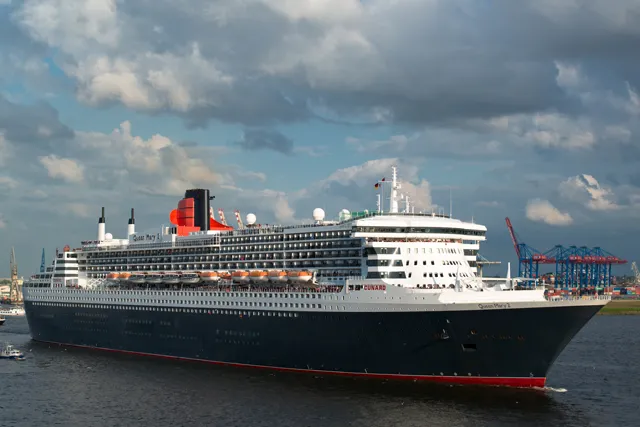
Cruise ships: How Many Miles Per Hour Does a Cruise Ship Go?
The average speed of cruise ships is between 21 and 23 knots (24 and 26 mph). Several factors play a role in determining a cruise ship's speed, including distance to the next port and wave height. Cunard's Queen Mary 2 has a top speed of 34.5 mph or 30 knots.
Cruise ships: how fast do they go?
The speed of most cruise ships is between 21 and 23 knots (24 and 26 mph). Several factors play a role in determining a cruise ship's speed, including distance to the next port and wave height. Cunard's Queen Mary 2 has a top speed of 34.5 mph or 30 knots.
1. How fast is a nautical knot?
2. How fast do cruise ships go at night?
3. What is the top speed of a cruise ship?
4. How fast do cruise ships go in km?
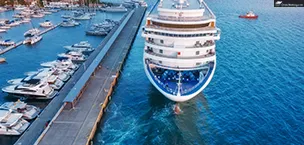
What is the cheapest month to cruise the Caribbean?
Book Caribbean Cruises The Caribbean is one of the most popular cruise destinations in the world. Its turquoise waters, white sandy beaches, and sunny weather are magnets for vacationers from [...]
October 27, 2023
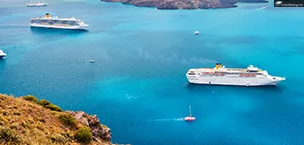
What is the best time of year to cruise the Canary Islands?
Book A Cruise Now The Canary Islands are a cluster of seven islands located off the coast of West Africa, known for their subtropical climate, stunning beaches, and rich cultural heritage. The [...]
May 10, 2023
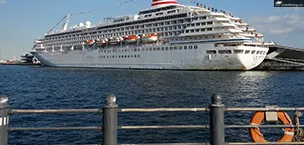
What is the best month to cruise in Japan?
Book A Cruise Now Japan is one of the most developed countries in the world, and it is also noted for its ideal blend of ancient and modern culture. Many tourists can be seen traveling across [...]
October 26, 2023
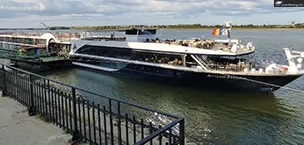
What cruise lines do river cruises?
Book A Cruise Now Cruising is a popular and luxurious way to travel, and while many people associate cruising with ocean travel, river cruising has become increasingly popular in recent years. [...]
May 09, 2023
Cruise Inquiry
Our cruise experts will help you to plan your perfect cruise vacation!
* I consent to receive communications by email or phone. I understand I may opt out at any time using the unsubscribe link provided in all communications. Please proceed to the Privacy Policy page or read our Terms & Conditions to understand how your data might be used.
We use cookies to give you the best online experience. By continuing to browse the site you are agreeing to our use of cookies. Privacy Policies
- CRUISE TIPS
- Carnival Cruise Line
- Celebrity Cruise Line
- Disney Cruise Line
- Holland America Line
- MSC Cruises
- Norwegian Cruise Line
- Princess Cruises
- Royal Caribbean
- Virgin Voyages
- Windstar Cruises
- Travel Deals
- CRUISE SHIP TRACKER
- Port Webcams

A knot is a unit of measurement used to determine the speed of a ship or aircraft. It equals one nautical mile per hour, making it a commonly used term in the maritime industry.
What is a Knot?
The term “knot” dates back to the 17th century when sailors would use a log line with regularly spaced knots to measure the speed of their ships.
The logline, with knots tied along its length, would be thrown overboard, and the number of knots that passed through their hands in a specific amount of time would determine the ship’s speed. Today, knots remain the preferred unit of measurement for speed on ships and are used by cruise ship captains to measure their vessels’ speed through the water accurately.
How Fast Is A Knot?

A knot is a unit of speed equal to one nautical mile per hour (1 knot = 1.15 mph). It is the speed at which one nautical mile is traveled in an hour. To put this into perspective, 6 knots would be approximately 7 mph, 20 knots would be 23 mph, and 30 knots would be 35 mph.
History of Knotted Measurement
The history of knotted measurement holds significant importance in maritime navigation. In the 17th century, sailors relied on a clever device called a “common log” to measure the speed of their ships using knots. This measurement technique became essential for accurate navigation.
The process involved lowering a piece of wood, known as the common log, into the sea from the ship’s stern while the ship was in motion. The log was attached to a line with evenly spaced knots. As the ship moved forward, sailors would count the number of knots that passed through their hands within a specific time interval.
By calculating the number of knots passed in a given period, sailors could determine the ship’s speed in nautical miles per hour, also known as knots. This measurement system allowed for more precise navigation, especially during long-distance travel or unfamiliar waters.
The term “knots” refers to the measurement unit derived from this process. Today, cruise ship captains and sailors continue to use this method to measure and monitor their vessel’s speed accurately. While modern technology has provided more advanced tools for speed calculation, the history of knotted measurement remains a crucial aspect of maritime navigation.
Measuring Speed in Knots

Measuring speed in knots has been a longstanding practice in the maritime industry. Originating in the 17th century, this unit of measurement has been essential for sailors to accurately determine their vessels’ velocity.
The term “knot” refers to the speed of one nautical mile per hour. To calculate the ship’s speed, sailors would use a method involving a piece of wood known as the common log. This log was attached to a line with evenly spaced knots.
By observing the number of knots that passed through their hands within a specified time interval, sailors could precisely determine the ship’s speed in knots. This system provided a reliable and practical means of navigation, especially during long-distance journeys or when encountering unfamiliar waterways.
As a unit of measurement, knots continue to be widely used in the maritime industry, allowing cruise ship captains and sailors to navigate with accuracy and confidence in their vessel’s speed and positioning.
Defining the Nautical Mile
The nautical mile is a fundamental unit of measurement in marine navigation, used to determine distances on the Earth’s surface. Unlike the regular land-based mile, equivalent to 5,280 feet, a nautical mile is based on the Earth’s longitude and latitude coordinates.
Specifically, a nautical mile is defined as one minute of latitude or about 1.852 kilometers (approximately 1.15078 miles). This creates a practical system for accurately measuring distances at sea, as the Earth’s longitude and latitude lines provide a consistent framework for navigation.
The international standard for the nautical mile was established in the 17th century and has since been adopted by countries worldwide, including the United States and the United Kingdom. This standardization allows for precise and uniform communication regarding distances, ensuring accuracy and safety in marine navigation.
Converting MPH to Knots

Converting miles per hour (MPH) to knots is common in marine navigation. You can use a simple conversion factor of 0.868976 to convert MPH to knots. Here’s how you can perform the conversion manually:
1. Start by identifying the speed in miles per hour that you want to convert to knots.
2. Multiply the speed in MPH by the conversion factor of 0.868976. The formula for the conversion is Knots = MPH x 0.868976.
3. Perform the calculation. For example, if the speed is 60 MPH, the conversion would be Knots = 60 x 0.868976 = 52.1376 knots.
4. Round the result to the nearest whole number if desired. In this case, the speed in knots would be approximately 52 knots.
Following these steps and using the conversion formula can easily convert MPH to knots. This can be particularly useful in marine navigation and communication, ensuring accurate speed measurements and adherence to standard units in the maritime industry.
What Is The Maximum Speed for Cruise Ships

Cruise ships are known for their luxurious amenities, world-class entertainment, and breathtaking views. But have you ever wondered how fast these massive vessels can actually go? The maximum speed of a cruise ship may surprise you.
Most modern cruise ships have a maximum speed of around 30 knots, which is equivalent to approximately 34.5 miles per hour. However, it’s important to note that cruise ships generally do not consistently travel at their maximum speed. The actual cruising speed of a ship can vary depending on a variety of factors, such as weather conditions, route, and fuel efficiency.
One notable cruise ship that stands out in terms of speed is the Cunard Line’s Queen Mary 2. With a maximum speed of 30 knots, the Queen Mary 2 is one of the fastest operational cruise ships in the world. This majestic vessel is renowned for its elegance and grandeur, offering passengers a truly unforgettable experience.
In conclusion, while the maximum speed of most cruise ships is around 30 knots or 34.5 miles per hour, this does not necessarily mean they always travel at that speed. The Queen Mary 2 , with its impressive speed capabilities, showcases the technological advancements in the cruise ship industry. So, next time you’re on a cruise, take a moment to appreciate the sheer engineering marvel that allows these ships to traverse the high seas with ease.
Using Minute of Latitude in Measurement

In the maritime industry, the concept of the “Minute of Latitude” plays a crucial role in measuring speed and navigation. A minute of latitude is a unit of angular measurement used to divide the Earth’s surface into smaller, more manageable portions. It is derived from the fact that the Earth completes one full rotation in 24 hours, resulting in 360 degrees of longitude.
The minute of latitude is a standard unit of measurement in navigation because it remains consistent regardless of the distance traveled. It allows for accurate calculations of speed and distance, even on long journeys. This is especially important when determining a ship’s position and estimating arrival times.
To calculate speed, the minute of latitude is used in combination with the time it takes for a ship to travel between two points. By dividing the distance traveled in nautical miles by the time taken in minutes, the speed in nautical miles per minute can be determined. This measurement can then be converted to knots by multiplying it by a factor of approximately 1.15.
Additionally, the minute of latitude is applied in calculating distance. By multiplying the speed in knots by the time in minutes, the distance covered in nautical miles can be obtained.
In conclusion, the “Minute of Latitude” is an essential unit of measurement in the maritime industry as it enables accurate calculations of speed and distance. By utilizing this concept, navigators can confidently navigate their vessels and ensure the safe and efficient operation of maritime travel .
Uses for knots in Navigation and Travel

Knots, a unit of measurement used in navigation and travel , have various applications in ensuring accurate calculations and precise navigation. This unit, derived from the minute of latitude, allows ships and sailors to determine their speed, estimate arrival times, and calculate distances covered during their journeys.
One essential use of knots in navigation is determining a ship’s speed. By measuring the time it takes for a ship to travel between two points, the distance covered in nautical miles can be divided by the time in minutes to calculate the speed in nautical miles per minute. This measurement can then be converted to knots by multiplying it by approximately 1.15. Captains and navigators rely on these measurements to maintain a steady and safe pace during their voyages .
Furthermore, knots are crucial in calculating distances covered during travel. The distance in nautical miles can be accurately determined by multiplying the speed in knots by the time in minutes. This allows sailors to plot their courses, estimate arrival times, and maintain efficient navigation.
Overall, knots serve as a vital unit of measurement in navigation and travel, providing sailors and navigators with valuable information to ensure successful and safe journeys. Whether it’s determining a ship’s speed or calculating distances, using knots helps maintain accuracy and precision in marine navigation.
Using Knots for Cruise Ship Captains

Cruise ship captains heavily rely on knots as a unit of measurement in their navigation and travel. Knots determine the speed at which a cruise ship travels and the distance it has covered during its journey.
Speed is critical for cruise ship captains to ensure a safe and efficient voyage. By measuring the time it takes for the ship to travel between two points, the distance covered in nautical miles can be divided by the time in minutes to calculate the speed in nautical miles per minute. This speed can then be converted to knots by multiplying it by approximately 1.15. Cruise ship captains use these measurements to maintain an optimal pace throughout their journey.
Additionally, knots are crucial in calculating the distance a cruise ship covers. The distance in nautical miles covered can be accurately determined by multiplying the speed in knots by the time in minutes. This information lets captains plot their routes, estimate arrival times, and make informed decisions during their voyage.
In conclusion, knots serve as a vital unit of measurement for cruise ship captains, enabling them to determine the speed and distance their ships cover. These accurate calculations inform navigation decisions and ensure passengers and crew a smooth and efficient voyage.
How Accurate are Measurements with Knots?

Measurements using knots as a unit of speed have some limitations that can introduce potential errors. One such limitation is the dependence on accurate and up-to-date equipment. Outdated or malfunctioning speed measuring devices can lead to inaccurate readings, jeopardizing the ship’s safety. Human error is also a factor that can affect the accuracy of knot measurements. Variations in the interpretation of data or recording errors can impact the measurements’ reliability.
Another challenge is the influence of changing wind speeds and sea currents. Cruise ships may experience varying environmental conditions during their journey, including gusts of wind or strong currents. These factors can impact the ship’s speed and make it difficult to maintain a consistent speed in knots.
Cruise ship captains rely on their experience and navigational skills to make adjustments and account for potential errors to mitigate these limitations. Regular maintenance and calibration of equipment also play a crucial role in ensuring accurate measurements. Finally, technological advancements continue to improve the accuracy and reliability of speed-measuring instruments.
Types of Knots Used for Measurement

Knots are a unit of measurement commonly used in nautical and aviation contexts to measure a vessel’s or aircraft’s speed.
The term “knot” refers to a speed of one nautical mile per hour, equivalent to approximately 1.15 statute miles per hour or 1.85 kilometers per hour. To accurately measure this speed, special knots are used.
The most commonly used knot for measuring speed is the “nautical mile per hour knot,” also known as the “international knot.” This knot is defined as one nautical mile per hour and is used worldwide as the standard unit for measuring the speed of ships and aircraft.
Another knot that is sometimes used for measurement is the “land knot.” This knot is defined as one statute mile per hour and is used to measure the speed of vehicles on land. Both types of knots are essential for accurate measurements and play a crucial role in various industries that rely on speed calculations, such as navigation, meteorology, and transportation.
Nautical Terms and Their Meanings
Nautical terms are crucial in measuring speed and distance in maritime navigation. One such term is “knot,” which is commonly used to measure the speed of a vessel. A knot refers to one nautical mile per hour. It originated in the 17th century when sailors would use a rope with evenly spaced knots tied to it. They would throw this rope overboard and count the number of knots pulled out in a set amount of time. This method allowed them to determine the speed of the ship.
Another related term is “nautical mile,” which is the unit of measurement used in maritime navigation. Unlike the land mile, which equals 5,280 feet, a nautical mile equals one minute of latitude. This measurement is significant because it remains consistent regardless of the vessel’s location on the Earth’s surface. Therefore, speed and distance in maritime navigation are typically measured in knots and nautical miles.
To summarize, the nautical terms “knot” and “nautical mile” are essential in maritime navigation to measure speed and distance accurately. A knot represents one nautical mile per hour, while a nautical mile is equal to one minute of latitude. These terms are widely used by sailors, including cruise ship captains, to ensure accurate measurements of their vessel’s speed and distance traveled.
Different Types of Nail Knots Used to Measure Speed.
Nail knots are commonly used in maritime navigation to measure speed accurately. These knots are tied at regular intervals along a rope, allowing the captain to calculate the vessel’s speed. Here are the different types of nail knots used for this purpose:
1. Single Knot: The single nail knot is the most basic type. It involves making a loop with the rope and passing one end through it. It is simple to tie and provides a straightforward measurement of speed.
2. Double Knot: The double nail knot is a variation of the single knot. Two loops are made in this case, and both ends are passed through the loops. This knot provides enhanced stability and is less prone to coming loose.
3. Triple Knot: The triple nail knot is the most secure and reliable type. It involves creating three loops and passing both ends through them. This knot offers maximum resistance to unraveling.
When using nail knots to measure speed, it is important to tie them tightly and regularly to ensure accurate measurements. Diagrams demonstrating the different types of nail knots can be found in sailing navigation guides and manuals. By utilizing these knots effectively, cruise ship captains can precisely determine the vessel’s speed and navigate the seas accordingly.
Calculating Speed with Different Units of Measurement

When it comes to measuring speed, there are various units of measurement used across different contexts. One commonly used unit to calculate speed in maritime navigation is the knot. A knot is a nautical term that refers to the speed of one nautical mile per hour. This measurement is derived from the 17th-century practice of using a rope with knots tied at regular intervals to determine the speed of a vessel. A knot equals approximately 1.15 statute miles per hour or 1.85 kilometers per hour. This conversion allows for accurate measurements when comparing speed across different modes of transportation. Whether on a cruise ship or any other vessel, “knots” remain a staple for calculating and discussing speed at sea.
MPH to Knots Conversion Formula

Knots are the unit of choice when measuring the speed of a cruise ship or any vessel at sea. However, converting to knots is a simple process if you are more familiar with miles per hour (mph).
You need to use the MPH to Knots conversion formula to convert mph to knots. The conversion factor is 1.150779. To obtain the speed in knots, you multiply the miles per hour by this conversion factor.
For example, if a cruise ship is traveling at 20 mph, to find out how fast it is moving in knots, you would multiply 20 by 1.150779. The result would be approximately 23.02 knots.
This conversion formula is essential for accurately measuring the speed of a cruise ship or any vessel in nautical terms. By using knots as the unit of measurement, cruise ship captains and sailors can communicate speed in a standardized and recognized manner.
In summary, when converting speeds from miles per hour to knots, multiply the speed in miles per hour by the conversion factor of 1.150779 to obtain the speed in knots. This ensures accurate measurements and clear communication regarding the vessel’s speed.
Knot speed and Knots to Mph FAQs

How Fast is a Knot?

A knot is equal to one nautical mile per hour (1.852km/h or 1.15078 mph).
What is 20 knots on a cruise ship?

A cruise ship moving at 20 knots is traveling as fast as a land vehicle at about 23 mph (37 km/hr).
How many miles is a knot?
One nautical mile per hour is used to measure speed. A nautical mile is slightly more than a standard mile.
Is a knot equal to a mile?
One knot equals one nautical mile per hour, or roughly 1.15 statute mph
What is a knot and how is it used to measure speed?
A knot is a unit used to measure the speed of a vessel or aircraft. It is equal to one nautical mile per hour. Speed is measured in knots rather than miles per hour because it is the standard unit for measuring speed in the maritime and aviation industries.
How is speed measured in knots different from miles per hour?
Speed is measured in knots and miles per hour is a land measurement. One knot is equal to 1.15 miles per hour. The difference between a nautical mile and a land mile is due to the curvature of the Earth. Nautical miles are used for sea distance while land miles are used for land distance.
How can I convert knots to miles per hour?
To convert knots to miles per hour, you can use the conversion factor of 1.15. Simply multiply the speed in knots by 1.15 to get the equivalent speed in miles per hour.
Why are knots still used to measure speed instead of miles per hour?
Knots are still used to measure speed because they are a time-honored tradition in the maritime industry. It also makes it easier for sailors and maritime professionals to communicate about speed using a standard unit.
What is the history behind the adoption of the international nautical mile?
The international nautical mile was adopted in 1954 as the standard unit for sea distances. It was based on the length of one minute of latitude. This standardization helped to ensure consistency in navigation and communication among maritime professionals.
How was speed measured using knots in the past?
In the past, speed was measured using a device called a “common log.” This device consisted of a rope with uniformly spaced knots at regular intervals. Sailors would count the knots that passed through a specific point over a certain time period to determine the speed of the vessel.
What is the top speed typically measured in knots for a cruise ship?
The top speed of a cruise ship is typically around 21 knots, although some ships may be capable of reaching speeds exceeding 25 knots under optimal conditions.
Why are knots used to measure speed on ships and not other units?
Knots are used to measure ship speed because they provide a consistent and standardized unit for navigation and communication. By using knots, sailors can convey speed information accurately, regardless of the vessel’s size or type.
What is the significance of measuring speed in knots for ship navigation?
Measuring speed in knots is significant for ship navigation as it provides a common language for maritime professionals to communicate and navigate effectively. It ensures that speed measurements are accurate and universally understandable, contributing to safe and efficient navigation at sea.
How does one calculate the speed of a vessel using knots?
To calculate the speed of a vessel using knots, one would count the number of knots passing through the ship at regular intervals within a specific timeframe. By knowing the distance between the knots, one can determine the speed of the vessel in knots, providing crucial information for navigation and voyage planning.
Table of Contents
- #cruiseship
- #navigation

Related Articles
Top 10 balcony cruise deals, top 10 msc cruises balcony deals, top 10 norwegian balcony cruise deals, get the cruise addicts newsletter free.
We'll send you the latest cruise news, tips, and reviews directly to your inbox.
Latest Articles
Top 10 royal caribbean balcony cruise deals, port canaveral cruise parking guide 2024.
© Copyright 2024 - Cruise Addicts
- Affiliate Disclaimer
- Privacy Policy

Details Behind The 2024 Kawasaki Ninja H2R's Blistering Speed
- The Ninja H2R is the fastest production motorcycle globally, boasting 306 horsepower and a top speed of 249 mph.
- Kawasaki's exclusive supercharged inline-four engine differentiates the H2R, providing unparalleled power-to-weight ratio.
- The Ninja H2R, designed for the track, features advanced traction control and a limited production run with an MSRP of $58,100.
Being profoundly knowledgeable in engineering, Kawasaki manufactures some of the world's most sophisticated machinery, and the Ninja H2 is among them. Kawasaki's foray into no man's land is to showcase their insane engineering prowess. We couldn't help but think: why would any sensible automaker spend time and resources developing something as ludicrous as the Ninja H2R?
UPDATE: 2024/05/02 00:13 EST BY RAUNAK AJINKYA
We've updated this piece to include a few more highlights of the incredible 2024 Kawasaki Ninja H2R.
The Ninja H2R is the fastest Kawasaki to date and is currently the Japanese marque's flagship offering. When launched, the H2 revolutionized motorcycle engineering, and several accolades adorn this beast of a machine. The Ninja H2R is a hardcore version of the regular H2 with more power and less weight.
In context, the H2R has 50% more power than the fastest street-legal motorcycles. The 2024 Kawasaki Ninja H2R is, in fact, the fastest production motorcycle in the world.
All the information in this piece has been sourced from Kawasaki's website and the official release on the Ninja H2R.
13 Most Powerful Kawasaki Motorcycles Ever
The 2024 kawasaki ninja h2r has a top speed of 249 mph.
At the heart of the H2R lies a 998cc inline-4 motor. One of the highlights of this engine is its adoption of a supercharger. Yes, a supercharged motorcycle! In fact, the H2R is currently the only supercharged production bike offered by any mainstream manufacturer.
The engine runs in two states of tune. The Ninja H2 makes do with 227 horsepower and 98.5 lb-ft of torque. In this configuration, the H2 runs the supercharger with 20.5 psi of boost. Moving on to the H2R, power figures jump significantly. The motor puts out 306 horsepower and 122 lb-ft of twist, enough to rocket the brute to just a shade under 250 mph. What's incredible is that the figures can be improved with a ram air intake. With it, the resulting power output comes to 231 horsepower for the H2 and 321 horsepower for the H2R.
With the Ninja H2R weighing in at 476.3 lbs wet, you're looking at an insane power-to-weight figure. The Ninja H2R has a power-to-weight ratio of close to 0.7 hp per lb and bags first place in the list of motorcycles with incredible power-to-weight figures. Even the Hennessey Venom F5's power-to-weight ratio of 0.595 hp per lb looks rather paltry in front of the H2R.
2024 Kawasaki Ninja H2R Engine Specs
(Specs sourced from Kawasaki )
The Kawasaki Ninja H2R Is Not Street-Legal
Here's the important bit: with great power comes responsibilities, and public roads are not where Kawasaki wants people riding the H2R. The construction of the bike concerning aerodynamics and the engine is not road-legal, so to speak.
Instead of rearview mirrors, this track-only superbike gets MotoGP-inspired winglets that help with aerodynamics. Also, there are no catalytic converters. Instead, you have straight pipes that help shed weight and add to unhindered exhaust flow. And the bike comes standard with slicks, which pretty much sums up the intention.
From an enthusiast standpoint, we'd rather use this on a track than anywhere else. Being a 300+ horsepower motorcycle, it really doesn't make sense to use it on public roads. That said, Kawasaki has let it loose on some tracks, and needless to say, it's quick . In 2015, the H2R managed to clock 206 mph on the Sulby straight , lending it a record for the highest top speed attained on the Isle of Man.
For an obscenely impractical piece of sophistication, the Ninja H2R is far from the ordinary. The amount of engineering that went into the bike borders on MotoGP-like precision and attention to detail. It's testimony to how far we've reached regarding two-wheeled motoring.
2024 Kawasaki Ninja H2R Cool Features
- Supercharged Engine
- Electronic Throttle Valves
- KLCM (Kawasaki Launch Control Mode)
- KCMF (Kawasaki Cornering Management Function)
- IMU-Enhanced Chassis Orientation Awareness
- Aerodynamic Downforce Generation Features (includes two sets of fixed winglets)
- Unique And Durable Mirror-Coated Spark Black Matte Paint
Why It's No Surprise Tom Cruise Sticks With Another Incredible Kawasaki In Top Gun: Maverick
The 2024 kawasaki ninja h2r prioritizes rider control.
So far, then, it's clear that Kawasaki hasn't held back one bit with the Ninja H2R. It's bagged the 'world's fastest' tag , it's the only production motorcycle with a supercharger, and it comes with a bunch of features that attempt to make all that power accessible.
But one of the most interesting bits about the H2R (aside from the rather ironic 'Economical Riding' indicator it gets) has to do with its traction control system. As we said, Kawasaki wants to make this ludicrous power accessible to riders, and to that effect, they've given the H2R nine levels of traction control. As per Kawasaki, 'Multiple rider-selectable modes offer progressively greater levels of intrusion to suit the riding situation and rider preference.'
When riding conditions are less-than-ideal, all you need to do is dial the traction control up to 9, and the system will detect excessive wheel spin and reduce engine output. While that's not unheard of, the interesting bit is that Kawasaki's software bases its analysis on the chassis' orientation relative to the track surface. In effect, this means that it's actively considering aspects like corner camber, gradient, and a few other factors to give you the best possible experience.
The 2024 Kawasaki Ninja H2R Is In A League Of Its Own
Riding the H2R is far from a civilized affair . Although you have to bear with the aggressive ergonomics, it's not as bad as some of its tier-two counterparts. The ride is nowhere near supple, and the bike is largely tuned to run around racetracks. You won't be disappointed if you do happen to track this monstrous four-banger. The engine is incredibly tractable thanks to its torquey nature. The supercharged 998cc unit is one of, if not the most refined and power-packed four-pot on the market. Power is more than adequate and is terrifying at full boost. Having a loose right hand might give a glimpse of what the H2R is capable of.
While the H2 is incredibly docile, the H2R isn't, and it's not something we'd recommend to novice riders. Kawasaki has very kindly equipped the H2 with multiple power modes, which cuts the available power so that the rider doesn't feel intimidated by all the 227 horses.
With such impressive capabilities, there's, arguably, no other motorcycle in the market that could call itself a worthy competitor to the H2R. For sheer excitement and uniqueness, the Kawasaki H2R strikes a balance between performance and absolute absurdity.
2024 Kawasaki Ninja H2R Hardware Specs
(Data sourced from Kawasaki)
Every Kawasaki Ninja Model Ranked By Power
The closest kawasaki ninja h2r rival is a winged ducati.
As we mentioned earlier, the Ninja H2R is one-of-a-kind. There is no other motorcycle that can fight it out with the mighty supercharged Kawasaki. The closest out there is an exotic Ducati. The crazy Panigale V4 R , just like the H2R, is Ducati's take on a racebike for the roads.
Tuned to squeeze out insane performance, the Panigale V4 R packs a 998cc Desmosedici Stradale V4 engine . It churns out 218 hp in the 'standard' guise. But things get serious for the red monster in its 'Racing' avatar. A few carbon fiber bits and a full titanium racing exhaust on the V4 R dial things up to a whopping 240.5 hp. This also cuts the curb weight from 427 to 415 pounds. The result is a red-hot Ducati with an insane power-to-weight ratio of 0.58 hp/ lb.
Kawasaki Ninja H2R Vs Ducati Panigale V4R
(Specs sourced from respective manufacturers' websites)
2024 Kawasaki Ninja H2R: Pricing And Availability
The 2024 Ninja H2R starts with an MSRP of $58,100 . Kawasaki has been selling the H2R for quite a while but won't expect revisions anytime soon. A limited amount of Ninja H2Rs are made, and the order period is "now closed," as per Kawasaki's website, which is a safe assumption that their supply met the demand rather quickly.
Color options? The lucky few that got one would have to make do with the mirror-coated matte spark black option, considering that's the only one Kawasaki will sell to you. And interestingly enough, Kawasaki hasn't disclosed any warranty details for the H2R.
- Source for features and technical specifications: Respective manufacturers' websites (Kawasaki and Ducati)

- Grand Rapids/Muskegon
- Saginaw/Bay City
- All Michigan
Cedar Point opens Saturday with new Top Thrill 2 ride
- Updated: Apr. 30, 2024, 1:16 p.m. |
- Published: Apr. 30, 2024, 12:48 p.m.
Top Thrill 2, world’s tallest and fastest triple launch coaster, debuts at Cedar Point. TT2 features two 420-foot tall towers with an initial launch speed of 74 mph and a top speed of 120 mph. Joshua Gunter, cleveland.com
- Justine Lofton | [email protected]
Cedar Point will kick off its 2024 season on Saturday with the grand opening of its new Top Thrill 2 strata coaster.
Top Thrill 2, the revamped ride formerly known as Top Thrill Dragster, is the “world’s tallest and fastest triple-launch strata coaster,” according to park officials. The coaster dominates the park’s skyline with two 420-foot track towers.

Most Popular Stories by Justine Lofton
- Michigan mall to close, be demolished for $1B mixed-use development
- Northern Michigan snowmobiling town launches 100 miles of scenic ORV trails
- Mackinac Island welcomes first cruise ship of the season, and it’s a big one
If you purchase a product or register for an account through a link on our site, we may receive compensation. By using this site, you consent to our User Agreement and agree that your clicks, interactions, and personal information may be collected, recorded, and/or stored by us and social media and other third-party partners in accordance with our Privacy Policy.
Electric boats
- electric boat
- Cosco Shipping
A fully-electric 10,000 ton container ship has begun service equipped with over 50,000 kWh in batteries
Chinese state-owned company COSCO Shipping has launched what it calls the “world’s largest” river-to-sea electric container ship. The Green Water 01 is a 10,000-ton+ fully electric vessel that sets a new benchmark in sustainability in the marine logistics industry.
China Ocean Shipping (Group) Company, or COSCO for short, is a state-owned multinational conglomerate headquartered in Shanghai specializing in marine transport. Not to be confused with Costco , COSCO Shipping was founded as a subsidiary in 2016 following an approved merger between COSCO and China Shipping.
The COSCO Group is the largest liner carrier in China, transporting hundreds of container vessels daily while also providing ships to Chinese automakers to help them export their electric vehicles to new markets overseas, including Europe.
To adapt to the times, COSCO has developed a massive, fully electric container ship, which has now officially begun service in China.

COSCO’s electric container ship begins service in China
According to a WeChat post from COSCO Shipping, which features reports from China’s CCTV , the company’s Green Water 01 electric container ship arrived safely and was berthed in the Port of Yangshan by the local maritime safety administration.
Top comment by Grant
This is a big deal. Maritime shipping causes three percent of greenhouse gas emissions by using 300 million tons of fuel every year.
The Green Water 01 sails at a total length of 119.8 meters, a molded width of 23.6 meters, a molded depth of 9 meters, a design draft of 5.5 meters, and a maximum speed of 19.4 km/h (12 mph). COSCO Shipping says the Green Water 01 electric container ship presents multiple firsts for the marine industry, including total length, width, container capacity, deadweight tonnage (10,0000 tons), and battery capacity (50,000+ kWh).
Speaking of batteries, the electric container ship is powered by a large-capacity battery combining for over 50,000 kWh. However, COSCO says the number of battery modules can be configured depending on the length of the voyage at sea. For example, additional 20-foot battery boxes offering 1,600 kWh of electricity can be loaded onto the container for extra range.
This ship’s captain, Wang Jun, told CCTV that when the Green Water 01 is equipped with 24 battery boxes, the electric container ship can complete trips that consume 80,000 kWh of energy, equivalent to approximately 15 tons of fuel for a similar journey in a traditional container ship.
COSCO Shipping also shared that the new Green Water 01 can save 3,900 kg (8,600 pounds) of fuel for every 100 nautical miles traveled, cutting carbon dioxide emissions by 12.4 tons. Following the successful launch, the Green Water 01 has commenced weekly service between Shanghai and Nanjing.
FTC: We use income earning auto affiliate links. More.


Scooter Doll is a writer, designer and tech enthusiast born in Chicago and based on the West Coast. When he’s not offering the latest tech how tos or insights, he’s probably watching Chicago sports. Please send any tips or suggestions, or dog photos to him at [email protected]

Manage push notifications


COMMENTS
The speed of cruise ships is measured in knots (Kn), 1 knot is 1 nautical mile per hour. Cruise help - for the "normal" speed values, multiply knots by 1,15 (mph), or 1,852 (kph). Below, you may compare the average passenger ship speed in the huge fleets of several big cruise ship companies and lines. The knot is a nautical term, meaning ...
Cruise ships typically slow down as they approach the shore. That said, the top speed of a vessel would be around 30 knots, which is about 35 miles per hour. Currently, the record for the fastest ...
The average cruise ship speed is approximately 20 knots, equivalent to 23 mph. Top-end cruise liners can reach speeds between 21 to 24 knots under optimal conditions. On its inaugural trip, the SS United States holds the historical record with a top speed of 38 knots. Various factors, including fuel efficiency and passenger comfort, influence ...
The average speed of a modern cruise ship is roughly 20 knots (23 miles per hour), with maximum speeds reaching about 30 knots (34.5 miles per hour). How fast a ship is able to sail depends on ...
The average cruise ship speed hovers around a swift 20 knots, translating to about 23 mph. However, this pales compared to the record-breaking SS United States , which reached a staggering cruise ship top speed of 38 knots or, better said, an incredible 44 miles per hour during its 1952 maiden voyage.
February 7, 2024. Cruise ship speed typically has an average cruising speed between 20 and 25 knots (23-29 mph or 37-46 km/h). Some of the fastest cruise ships, like the Queen Mary 2, can reach speeds of up to 30 knots (34.5 mph or 55.5 km/h). It's important to note that these speeds are not constant, as they can fluctuate depending on the ...
The average cruising speed of a cruise ship is between 18 to 22 knots (20 to 25 mph), while the maximum top speed is around 25 knots. The fastest cruise ship is Cunard's Queen Mary 2, which can reach speeds of up to 30 knots. ... Cruise ship speed safety is a top priority for all cruise lines. Their ships are designed with advanced technology ...
A knot is the nautical measure of speed used by cruise ships and other maritime vessels. One knot represents 1 nautical mile per hour. But "knot" isn't simply a misspelled nickname for "naut" (as in nautical mile). Its origins are far more literal, according to the United States' National Ocean Service. In the 17th century, ship crews measured ...
The Bottom Line. Cruise ships travel relatively slowly, with an average speed of 18 to 22 knots (20 to 25 miles per hour). Ocean liners like Queen Mary 2 can reach top speeds of 30 knots, but for true cruise ships, the maximum speed is more like 25 knots. So when asking how fast can a cruise ship go, really you're asking about theoreticals ...
Let's take a look at three of the fastest cruise ships in the world. 1. Cunard Line's RMS Queen Mary 2: With a top speed of just over 30 knots (35 mph), the Queen Mary 2 takes the crown as the fastest cruise ship in the world. This majestic liner is known for its elegant design and luxurious amenities.
High-Speed Ferries: Smaller vessels, resembling cruise ships, but categorized as high-speed ferries, can surpass 30 knots. The fastest cruise ship in the world, the Royal Caribbean International's Anthem of the Seas , can reach a top speed of 42 knots (48.6 mph).
With a top speed of thirty mph, the Queen Mary 2 is the fastest cruise ship currently in operation. Factors Affecting Cruise Ship Speed (Credit: The telegraph) There are many factors that can affect a cruise ship's speed, including: Cruise Itinerary: Each port of call requires cruise ships to arrive on schedule. Being late to a port can ...
Depending on the exact ship, cruise ships can get up to a good speed given the need. Cruise ship speeds are measured in knots, and one knot is 1.15078 miles per hour on land. Royal Caribbean says its cruise ships go as fast as 18 to 20 knots, depending on the specific ship and itinerary travelled. This is equivalent to 20 to 23 miles per hour ...
Here is the cruising speed of some popular cruise ships: Carnival Cruise Line: Carnival Vista: 23 knots. Carnival Breeze: 22 knots. Carnival Liberty: 19.6 knots. Carnival Fantasy: 19.5 knots ...
The average cruise ship speed is about 18-22 knots (or 20-25 MPH). Keep in mind that this is the average speed, not the fastest speed the ship can travel. There are also a number of factors that ...
The fastest cruise ship in service today is Cunard's Queen Mary 2, with a reported top speed of 30 knots, or 34.5 mph. Publish date January 25, 2023 How was this article?
The Blue Ribband, awarded for the fastest crossing of the Atlantic, still belongs to the SS, and that is a record here to stay with no new ocean liners coming up in the near future. Ship: SS United States. Type: Ocean liner. Top Speed: 39 knots [44.87 mph or 72.24 kmph] [claimed top speed - 43 knots]
The average cruise ship cruising speed is about 20 knots per hour. A knot is a form of measurement that equals one nautical mile. A nautical mile is a bit longer than a statute, or land-measured mile. One knot is the same as 1.15 statute miles. So, if a cruise ship is sailing at a speed of 21 knots, you might compare that to roughly 24 mph.
Now that you know the concept of ship speed, let's dive into the meaty bit — how fast do cruise ships go? Most modern cruise ships — from the dazzling Royal Caribbean vessels to your everyday ocean liners — glide through the seas at an average speed of about 20-30 knots. That's roughly 23-34 mph on land. Yep, that's slower than your ...
For example, Viking Ocean's current generation of cruise ships such as the Viking Star (47,842 GT) is rated at only 20 knots maximum speed with a 17-knot service speed. Compare that to 79,300 for Queen Mary 2 and 168,028 for Norwegian Bliss. Royal Caribbean's Symphony of the Seas and Odyssey of The Seas have a max speed of 22 knots.
The average speed of cruise ships is 20 knots (23 mph, 37 km/h), and the current fastest cruise ships are the MV Glory Sea ship and the Queen Mary 2 ship, both of these vessels can achieve a cruise speed of 30 knots (35 mph, 56 km/h). ... The top speed of ships differs from their comfortable service speed. The route of a particular ship affects ...
The speed of most cruise ships is between 21 and 23 knots (24 and 26 mph). Several factors play a role in determining a cruise ship's speed, including distance to the next port and wave height. Cunard's Queen Mary 2 has a top speed of 34.5 mph or 30 knots.
For example, if a cruise ship is traveling at 20 mph, to find out how fast it is moving in knots, you would multiply 20 by 1.150779. The result would be approximately 23.02 knots. This conversion formula is essential for accurately measuring the speed of a cruise ship or any vessel in nautical terms. By using knots as the unit of measurement ...
The ship can travel at a cruising speed of 22 knots. ... "The top 10 biggest cruise ships in the world" was originally created and published by Ship Technology, a GlobalData owned brand.
In 2015, the H2R managed to clock 206 mph on the Sulby straight, lending it a record for the highest top speed attained on the Isle of Man. For an obscenely impractical piece of sophistication ...
Top Thrill 2, world's tallest and fastest triple launch coaster, debuts at Cedar Point. TT2 features two 420-foot tall towers with an initial launch speed of 74 mph and a top speed of 120 mph ...
The Green Water 01 sails at a total length of 119.8 meters, a molded width of 23.6 meters, a molded depth of 9 meters, a design draft of 5.5 meters, and a maximum speed of 19.4 km/h (12 mph).